

A Twitch of Anesthesia
For future, current, and prospective nurse anesthetists.
- Mar 27, 2019
Personal Statement- Nurse Anesthesia Application

By popular demand, I am sharing my personal statement from when I applied to CRNA school in 2016. Keep in mind, it's not perfect by any means and I have become a much better writer while in CRNA school due to all the doctoral research classes, haha. However, I wanted to be honest and not make any edits. I was 26 when I started my anesthesia journey and reading my statement is not only humbling, but it's a reminder of where I started and how BADLY I wanted it.
Brittany B Harvey, RN, BSN, CCRN
Since high school, I have always been fascinated by the nurse anesthesia career. However, it was not until the summer before my freshman year of college, while volunteering at Children’s Healthcare of Atlanta, I gained a true insight into the field. I was assisting a child life specialist prepare a nine-year old boy for a routine tonsil-adenoidectomy. We carefully demonstrated how he would wear the “special space mask” and showed him the “little straw” he would have in his arm to receive sleeping medications during his surgery. Shortly following that consult, I mentioned to the child life specialist my interest in furthering my education after nursing school, focusing on anesthesia. A few minutes later, she introduced me to a young, effervescent CRNA, named Kelly. Kelly allowed me to shadow her for the rest of the day and spent hours teaching me the intricacies of anesthesia. I could see the passion in her eyes and became instantly hooked! Over the past three years, I have had the opportunity to shadow an anesthesiologist and three CRNAs during several cardiac and thoracic surgeries, including a left ventricular assist device implantation. That fiery passion I witnessed in Kelly’s eyes was also present in the eyes of the three CRNAs, and is now the same passion I carry with me for anesthesia.
Throughout nursing school, I continued to carry the thought of nurse anesthesia with me while completing my BSN degree. Out of our 50-student cohort, I was one of 12 nursing students selected to participate in the nursing honors program and graduated in the top nine percent of my class. I was also given the privilege to serve on my college’s Nursing Student Board as the Community Health Director for over a year. In this position, I was responsible for fundraising and organizing community health events.
These community events included public flu shot clinics, educational presentations for fellow undergraduate students, Relay for Life, Walk for a Cure, and Susan G Komen walks. While in nursing school I continued to stay involved in our local chapter (MSCANS), state chapter (GANS), and national chapter (NSNA) for nursing students. Through my membership with NSNA, I was introduced to my first medical mission, a two-week trip to Costa Rica with other nursing and medical students. I have since
participated, as a registered nurse, on another two-week medical mission trip to Kenya with a group of talented professionals from various medical fields. On both of these trips, I had the unique experience of caring for adults and children outside of modern medical conveniences. My focus on these trips was displaying compassion and improving quality of life for those who lack access to primary healthcare. These experiences further fueled my desire to grow and challenge myself as a nurse while improving current nursing practices.
Following nursing school graduation, I was offered an amazing opportunity to work at Children’s Healthcare of Atlanta-Scottish Rite in a 50-bed, level II trauma emergency center. While there, I gained an irreplaceable foundation for nursing, which in turn inspired me to transition to an adult intensive care setting. After 18 months at Scottish Rite, I left to join an incredible team of nurses and providers at Piedmont Atlanta Hospital in the Coronary Care Unit/Medical Intensive Care Unit. At this 500-bed
hospital, including six adult intensive care units, I have been rewarded with extraordinary opportunities that have fully prepared me for advancements in my nursing career. For example, one month after completing my CCU orientation, I was approached by my unit manager to join two highly competitive critical care nursing councils. I was quickly voted in as co-chair of our CCU Unit Based Council and
shortly thereafter became CCU’s representative for Piedmont’s Critical Care Practice Council, where I still serve. On these councils, I have a front row seat to our nurse driven practices and have contributed in creating protocols and procedures for restraints, bronchoalveolar lavages, and post-cardiac arrest induced hypothermia. In addition, I assisted in creating the 2015 and 2016 annual competencies for all six intensive care units, developed three in-services to educate our intensive care nurses on topics including QT intervals and Torsades de Pointes, rapid sequence intubation, and hypothermia therapy following cardiac arrests, and am currently assisting with data collection and analysis as our CCU submits its first application for a Beacon Award. Continuing to always challenge myself, seven months off orientation, my lead charge nurse requested I begin training for relief charge and precepting of new
graduate nurses. A few months later, I was given a permanent relief charge nurse position for our night shift team.
While working in our 19-bed CCU/MICU, I have had the opportunity to care for a high acuity patient population and am experienced with ventilator support, ABG analysis, EKG interpretation, various ventricular assisted devices, intra-aortic balloon pumps, transvenous pacemakers, EKOS, CRRT/CVVHD, hypothermia devices, Swan-Ganz catheters, Rotoprone therapy, and several other diagnostic and therapeutic devices. I am familiar with vasoactive drips including, Epinephrine, Norepinephrine, Phenylephrine, Vasopressin, Dopamine, Dobutamine, Milrinone, Nitroglycerin,
Nitroprusside, as well as many other essential medications. I have also developed a thorough understanding of these medications and their effects on cardiac output/index, SVR, PVR, PAS/PAD, PAOP, heart rate and blood pressure due to our requirements for continuous in-depth monitoring of our patients. After 18 months in the CCU/MICU, I was the first intensive care nurse to be approved for cross training in our 34-bed CVICU. In this unit, I have been able to care for an array of patients including, various open-heart surgeries, VV/VA extracorporeal membrane oxygenation, heart transplants, and
ventricular assisted device transplants. In addition to my cross training, leveling as a Nurse III Preceptor, receiving my CCRN, and actively studying for my CMC has enabled me to feel more confident in autonomously caring for my acutely ill patients, and has allowed me to quickly identify and prioritize complex clinical situations. These professional advancements, as well as the positions I have held throughout nursing school and my career, have greatly enhanced my leadership skills in my nursing
Like many others who join the healthcare field, I have a strong desire and eagerness to serve and care for others. As a CRNA, I will be able to directly center my attention on one patient at a time, concentrating solely on them. I cannot think of a more focused professional role as a patient advocate. I hold a deep respect for the nurse anesthesia career, as it demands excellence, vigilance, leadership, and compassion. It can be immensely challenging, yet fully rewarding. I am striving to become a CRNA
because each day I want to have the responsibility to care for another individual during the most vulnerable time of their life- a time when they place every ounce of their trust in their nurse anesthetist. I know anesthesia school will be one of the greatest challenges I will ever face, but I am determined and confident in myself and the passion I have for anesthesia to succeed in this highly respectable career. Thank you for considering me as a future student and I hope to become a valuable addition to your CRNA program!
Brittany B Harvey
Recent Posts
Year 1 Recap of Anesthesia School
What I Wish I Would Have Known Before Starting CRNA School
11 Things I Learned Within My First Year of CRNA School
Sample Personal Statement: Anesthesiology
I am eager to pursue residency training in anesthesiology. After completing third-year medical school rotations, anesthesiology stands out as the specialty that aligns perfectly with my personality and future goals. Anesthesiology combines the cerebral requirements of internal medicine with the procedural skill of surgery. The excitement of performing procedures that have instantaneous effects on patient comfort and stability provides me with immense satisfaction. Furthermore, I look forward to working with a diverse patient population and unique doctor-patient interaction.
These are just a few reasons why anesthesiologists, as a group, love their specialty and have very high job satisfaction. It also explains why patients, in general, are so appreciative of the services anesthesiologists provide. It is my sincere desire to provide these valuable services in the invigorating field of anesthesiology. One of my first rotations in medical school was on trauma surgery. I vividly remember an unconscious trauma patient, MJ, who required an emergent intubation. Due in part to the patient's body habitus it was very difficult to obtain an airway. As MJ's oxygen saturation continued to drop, the room was silent and the tension was frightening. Thankfully an anesthesiologist was nearby and, after several attempts, was able to successfully intubate the patient. It was stimulating to me that the anesthesiologist was literally the patient's lifeline. Immediately following the intubation, MJ underwent surgery. Though the surgery was fascinating, it was more impressive to me that the anesthesiologist was the individual maintaining the patient's vital functions. I had already been considering anesthesiology for my career, but this experience helped solidify my decision.
Many of my experiences and values demonstrate my suitability for anesthesiology. I fully appreciate the value of teamwork, as evidenced by years of playing competitive soccer. Leadership is also essential to becoming a proficient anesthesiologist and my experiences teaching, coaching and as an elected officer in several positions attest to my ability to lead and inspire others. I am clear-headed and comfortable working in critical situations, and possess manual dexterity necessary to perform effectively. Finally and equally importantly, exceptional anesthesiologists communicate well with their patients and comfort them in times of great stress; my work as a missionary and my ability to speak Spanish exemplify my capacity to ease concerns in diverse patient populations I will contribute a passion for excellence, a solid work ethic, and an ambition to succeed to my anesthesiology residency program. My commitment to lifelong learning, as confirmed by the research project in which I participated during medical school, will enhance the quality and care provided in my residency program. With great anticipation I look forward to mastering the art of general anesthesiology and envision myself pursuing post-residency fellowship training, possibly in pediatric anesthesia or pain management. I seek a program that will assist me in achieving my professional goals.
An official website of the United States government
The .gov means it’s official. Federal government websites often end in .gov or .mil. Before sharing sensitive information, make sure you’re on a federal government site.
The site is secure. The https:// ensures that you are connecting to the official website and that any information you provide is encrypted and transmitted securely.
- Publications
- Account settings
Preview improvements coming to the PMC website in October 2024. Learn More or Try it out now .
- Advanced Search
- Journal List
- J Grad Med Educ
- v.14(5); 2022 Oct
Ten Steps for Writing an Exceptional Personal Statement
Danielle jones.
All authors are with Emory University School of Medicine
Danielle Jones, MD, is Associate Professor of Medicine, Associate Section Chief of the Division of General Internal Medicine Grady Section, and Associate Program Director, Internal Medicine Residency
J. Richard Pittman, Jr
J. Richard Pittman Jr, MD, is Associate Professor of Medicine, and Program Director, Fourth Year Internal Medicine Sub-Internship
Kimberly D. Manning
Kimberly D. Manning, MD, FACP, FAAP, is Professor of Medicine, and Associate Vice Chair, Diversity, Equity, and Inclusion, Department of Medicine
The personal statement is an important requirement for residency and fellowship applications that many applicants find daunting. Beyond the cognitive challenge of writing an essay, time limitations for busy senior residents on clinical rotations present added pressure. Objective measures such as scores and evaluations paint only a partial picture of clinical and academic performance, leaving gaps in a candidate's full portrait. 1 , 2 Applicants, seemingly similar on paper, may have striking differences in experiences and distances traveled that would not be captured without a personal narrative. 2 , 3 We recommend, therefore, reframing personal statements as the way to best highlight applicants' greatest strengths and accomplishments. A well-written personal statement may be the tipping point for a residency or fellowship interview invitation, 4 , 5 which is particularly important given the heightened competition for slots due to increased participation on virtual platforms. Data show that 74% to 78% of residency programs use personal statements in their interview selection process, and 48% to 54% use them in the final rank. 6 , 7 With our combined 50 years of experience as clerkship and residency program directors (PDs) we value the personal statement and strongly encourage our trainees to seize the opportunity to feature themselves in their words.
Our residency and medical school leadership roles position us to edit and review numerous resident and student personal statements annually. This collective experience has helped us identify patterns of struggle for trainees: trouble starting, difficulty organizing a cogent narrative, losing the “personal” in the statement, and failing to display unique or notable attributes. While a bland personal statement may not hurt an applicant, it is a missed opportunity. 4 , 8 We also have distinguished helpful personal statement elements that allow PDs to establish candidates' “fit” with their desired residency or fellowship. A recent study supports that PDs find unique applicant information from personal statements helpful to determine fit. 4 Personal statement information also helps programs curate individualized interview days (eg, pair interviewers, guide conversations, highlight desirable curricula). Through our work with learners, we developed the structured approach presented here ( Figure 1 ). Applicants can use our approach to minimize typical struggles and efficiently craft personal statements that help them stand out. Busy residents, particularly, have minimal time to complete fellowship applications. We acknowledge there is no gold standard or objective measures for effective personal statement preparation. 9 Our approach, however, combined with a practical tool ( Figure 2 ), has streamlined the process for many of our mentees. Moreover, faculty advisors and program leaders, already challenged by time constraints, can use this tool to enhance their coaching and save time, effort, and cognitive energy.

Structured Approach to Writing a Personal Statement

Ten Steps for Writing an Exceptional Personal Statement: Digital Tool
Note: Use the QR code to download the digital tool and follow the 10 steps highlighted in Figure 1.
Given word count and space limitations, deciding what to include in a personal statement can be challenging. An initial brainstorm helps applicants recall personal attributes and experiences that best underscore key strengths (Step 1). 10 Writing explicit self-affirmations is challenging, so we recommend pairing with a near peer who may offer insight. Useful prompts include:
- ▪ What 3 words best encapsulate me?
- ▪ What accomplishments make me proud?
- ▪ What should every program know about me?
Reflecting on these questions (Step 2) helps elucidate the foundations of the narrative, 10 including strengths, accomplishments, and unique elements to be included. Additionally, the preparation steps help uncover the “thread” that connects the story sequentially. While not all agree that personal or patient stories are necessary, they are commonly included. 5 One genre analysis showed that 97% of applicants to residency programs in internal medicine, family medicine, and surgery used an opening that included either a personal narrative (66%) and/or a decision to enter medicine (54%) or the specialty of choice (72%). 9 Radiology PDs ranked personal attributes as the second most important component in personal statements behind choice of specialty. 9 Further, a descriptive study of anesthesia applicants' personal statements ranked those that included elements such as discussion of a family's or friend's illness or a patient case as more original. 3 We feel that personal and patient stories often provide an interesting hook to engage readers, as well as a mechanism to highlight (1) personal characteristics, (2) journey to and/or enthusiasm for desired discipline, and (3) professional growth, all without giving the impression of being boastful. Sketching these Step 2 fundamentals prepares applicants to begin writing with intention.
Writing and Structuring
Once key elements are identified, the next steps assist with the actual writing. Utilizing information gleaned from the “Preparing” steps, start with a freewriting exercise (Step 3), an unrestricted association of ideas aimed at answering, “What experiences have cultivated my strong interest in pursuing [______]?” At this stage, ignore spelling and grammar. Just write, even if the product is the roughest, rough draft imaginable. 10 Setting a timer for 10 to 15 minutes establishes a less intimidating window to start. Freewriting generates the essential initial content that typically will require multiple revisions. 10
Next, we recommend structuring the freewriting content into suggested paragraphs (Step 4), using the following framework to configure the first draft:
- ▪ Introductory paragraph: A compelling story, experience, or something that introduces the applicant and makes the reader want to know more (the hook). If related to a patient or other person, it should underscore the writer's qualities.
- ▪ Paragraph 2: Essential details that a program must know about the applicant and their proudest accomplishments.
- ▪ Paragraph(s) 3-4: Specific strengths related to the specialty of choice and leadership experiences.
- ▪ Closing paragraph: What the applicant values in a training program and what they believe they can contribute.
Evaluate what has been written and ensure that, after the engaging hook, the body incorporates the best pieces identified during the preparation steps (Step 5). A final paragraph affords ample space for a solid conclusion to the thread. Occasionally the narrative flows better with separate strengths and leadership paragraphs for a total of 5, but we strongly recommend the final statement not exceed 1 single-spaced page to reduce cognitive load on the reader.
This part of the process involves revising the piece into a final polished personal statement. Before an early draft is shared with others, it should be evaluated for several important factors by returning to the initial questions and then asking (Step 6):
“Does this personal statement…”
- Amplify my strengths, highlight my proudest accomplishments, and emphasize what a program must know about me?
- Have a logical flow?
- Accurately attribute content and avoid plagiarism?
- Use proper grammar and avoid slang or profanity?
While not as challenging as the other steps, optimization takes time. 10 At this stage, “resting” the draft for 1 week minimum (Step 7) puts a helpful distance between the writer and their work before returning, reading, and editing. 10 Writers can edit their own work to a point, but they often benefit by enlisting a trusted peer or advisor for critiques. Hearing their draft read aloud by a peer or advisor allows the applicant to evaluate the work from another perspective while noting how well it meets the criteria from the tool (provided as online supplementary data).
A virtual or in-person meeting between applicant and mentor ultimately saves time and advances the writer to a final product more quickly than an email exchange. Sending the personal statement in advance helps facilitate the meeting. Invite the advisor to candidly comment on the tool's criteria to yield the most useful feedback (Step 8). When done effectively, edits can be made in real time with the mentor's input.
We bring closure to the process by focusing on spelling and grammar checks (Step 9). Clarity, conciseness, and the use of proper English were rated as extremely important by PDs. 3 , 9 Grammatical errors distract readers, highlight inattention to detail, and detract from the personal statement. 3 , 9 Once more, we recommend resting the draft before calling it final (Step 10). If the piece required starting over or significant rewriting based on feedback received, we also suggest seeking additional feedback on this draft, ideally from someone in the desired residency or fellowship discipline. If only minor edits (eg, flow, language) were incorporated, the personal statement can be considered complete at this time.
Writing a personal statement represents a unique opportunity for residency and fellowship applicants to amplify their ERAS application beyond the confines of its objective components. 3 Using this stepwise approach encourages each personal statement to be truly personal and streamlines the process for applicants and reviewers alike. All stakeholders benefit: applicants, regardless of their scores and academic metrics, can arm themselves with powerful means for self-advocacy; PDs gain a clearer idea of individual applicants, allowing them to augment the selection process and curate the individual interview day; and faculty mentors can offer concrete direction to every mentee seeking their help.

- Professional Development
9 Key Ways To Maximize Your Personal Statement
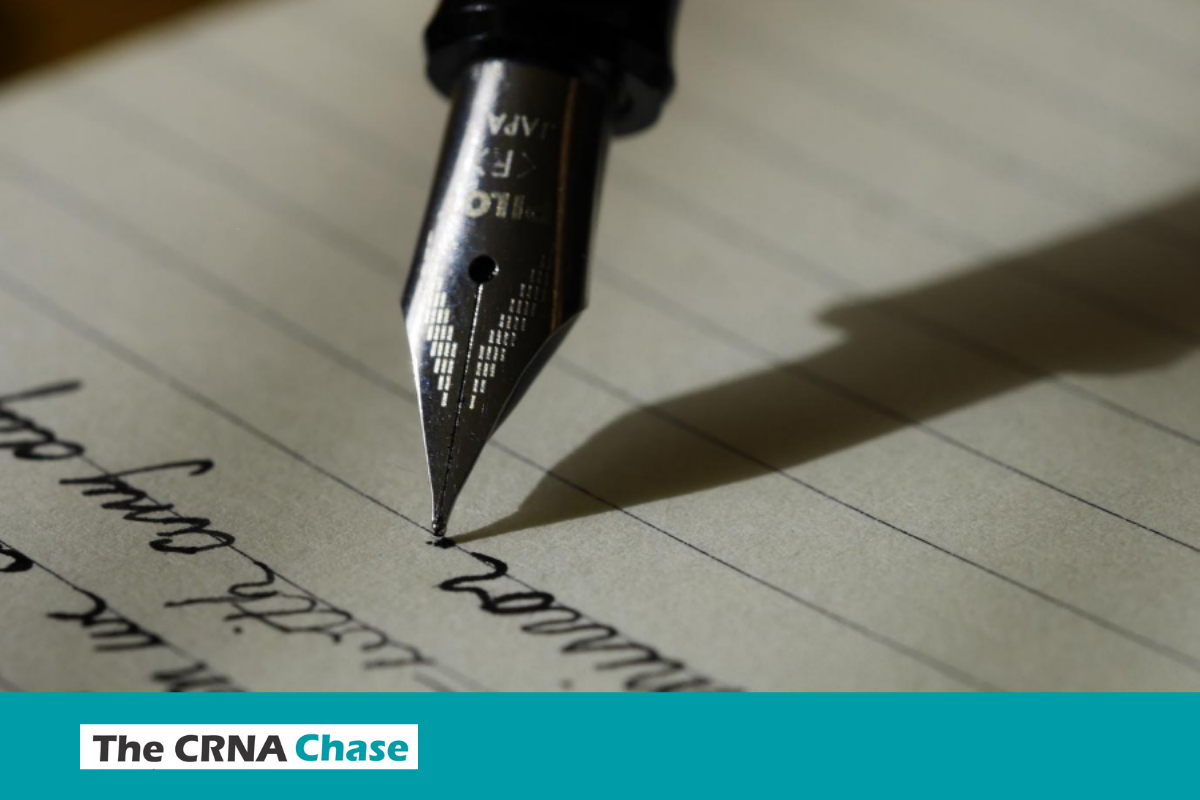
Your personal essay will be read along with your application so you should think about how to tell your story in a way which will complement it. You also want to maximize your essay so the admissions committee will remember you after reading it.
This is great because the reader begins to care for you before they even meet you in person. And of course the ultimate goal is for you to receive an invitation to interview for a spot in a nurse anesthesia program.
Hopefully I’ve convinced you the importance of a well written personal statement. Here are 9 ways to maximize your personal statement and impress the admissions committee.
Read: 3 Best Ways to Show, Not Tell on Your Personal Essay
Make your story radiate
Your story should have a beginning, a middle, and an end. So you need to tell your readers not only what happened, but also why your story is significant. Again, the first paragraph has to be interesting so the reader will stick around and keep reading. This is why you want to wow them right off the bat. Your story should say a lot about you and also show you are a good fit for their nurse anesthesia program. And show both the personal and professional growth over the years which has prepared you to later become a CRNA.
Make yourself sound interesting
This just means how do you get people to listen to you? The way to accomplish this is to talk about interesting things. Sorry guys, not trying to dumb this down. But it’s possibly quite this simple. First you need to pick one key experience and talk about that. Second, take the reader on your journey to nurse anesthesia school. While you are at it, speak on your background. And be sure to include examples as you go. This is your opportunity to paint a picture of the interesting person you are and what you can bring to the profession.
Don’t ramble
Rambling is a common problem when writing any kind of essay. When you start rambling, you lose your readers attention and possibly a chance to get an interview for program you have applied to. There are several ways to prevent yourself from rambling. Each of these ways will allow you to organize your thoughts and personal statement better. Here are the ways you can avoid rambling:
- Frame your thoughts in an organized fashion
- Don’t cram to much information into the essay
- Avoid long sentences- a period as a quick fix
- Always think what is the main point
By following these suggestions, hopefully this will keep you on point and prevent you from rambling too much. So the point is try not to ramble.
Address your weaknesses and move on
The big question is, should you even speak on your weaknesses and struggles? It depends. If the blemish is not that bad, don’t try to explain it. Addressing negative aspects should only be done if you can further showcase the positive qualities which resulted from it. Of course, each nurse anesthesia school or program is different in regards to admission criteria. So, if a school comes out and says their last incoming class average GPA was 3.7 and your GPA is 3.0 you may feel inclined to speak on it.
When writing about your weaknesses be sure you are not placing blame or making it a complete sob story. And you always want to explain how the hardship made you a better student or stronger person for their program. And if you had some bad grades early on your career but have since passed advanced courses, then that would likely speak for itself and not need to be rehashed.
Use your active voice
Active voice is defined as a sentence which has a subject that acts upon its verb. Basically, the subject always “does” the action in the sentence not the other way around. Using your active voice does a few things. First, it allows you to use fewer words, be more concise and efficient. And it also prevents grammatical errors.
By writing your personal statement in your active voice, it feels like you are talking to the reader. It also shows you are confident and assertive which what the program is looking for. An easy way to use active voice is to avoid using “I” a lot. While the difference between active and passive voice might be mostly grammatical, the impact of using active voice is powerful. Basically it is a matter of confidence.
Get feedback from multiple reliable sources
Definitely get a reliable source to read through your statement before you submit your application to get honest feedback. It is always better to have an extra set of eyes on the lookout for grammatical/ spelling errors. But no more than 2- 4 trusted people should read it because you don’t want to have so much advice you get confused or overwhelmed. Use someone who is already in nurse anesthesia or maybe someone you know well. Afterwards, ask questions like do you think my personal statement is compelling or does it sound sincere?
Use anecdotes
After reading what feels like hundreds of personal statements the ones that stand out are the most genuine and interesting. Those applicants are able to showcase their character, desire to be a CRNA, and their voice. One of the best ways to do this is by using an anecdote.
But first what is an anecdote? It is a brief and engaging story about a real person or true events. Basically, it is used to illustrate a point. These stories are powerful and can create an instant bond between you and the reader. This is what you want. This is just another way to stand out from the rest of the applicants.
An anecdote is only effective when used briefly and in a descriptive and relevant way. It is short to maintain the reader’s attention. The focus should be on the most important aspect of the story. As the reader is engaged in the statement, you want them to mentally paint a picture of what they are reading in their head.
There are two places within the personal statement where an anecdote is often found. In the beginning to “hook” the reader in to what you have to say and at any point to illustrate a story within the essay. However, to prevent confusing the reader you must transition back to your main idea.
Read: How to Create a Killer Opening on Your Personal Statement
Draw on your stories
Everyone has a story to tell, even you. The way to stand out is to become more personable. And one way to do this is by weaving in your stories while writing your personal statement. That’s how you will connect with your readers. The best way to pull from your account of things is to jot them down into a spiral notebook. Then decide on what you care to share with the reader. When you’ve chosen a story to tell, it’s important to ask yourself what the story is about and how it can relate to your personal essay. Many of your life lessons can be expressed on paper.
Follow their prompts or questions
Remember you may feel limited by the prompts given, but just know they are all fairly open to your own interpretation. No matter what, be sure to follow the instructions which you are given. At the same time you need to show them who you are, your personality and journey to anesthesia. Use this time to show admissions committee what you are truly passionate about, which is becoming a CRNA. Following the prompts is a good thing and will allow the reader to get a full picture of who you are.
Bottom Line
These are just a few tips to maximize your personal statement so you make a great impression upon the admissions committee. Remember, this is an important component to your application. An amazing personal statement doesn’t guarantee you an interview, but it can positively or negatively impact your chances as well. This is why you should not take your personal statement lightly.
I hope this information is just what you need to get started on your personal statement. If you’re still stumped on where to start with your personal statement, come join us at CRNA Chase Academy for more help . If your personal statement draft is complete, we also offer personal statement reviews. Here is the link.
Editor’s note: This post was originally published in August 2020 and has been completely revamped and updated for accuracy and comprehensiveness.
Leave a comment
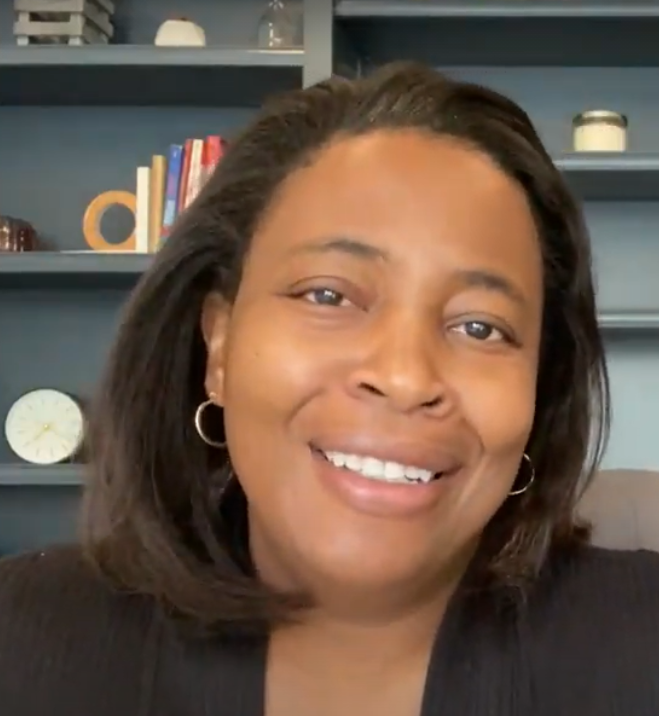
Hi! I’m Kiki. I’m a Certified Registered Nurse Anesthetist and PreCRNA Coach/Mentor for ICU Nurses to help them get into a CRNA program on the 1st try.
Recent Posts

CRNA Program Admissions: The Challenge of High Demand and Intense Rivalry

The Biggest CRNA School Myth Debunked
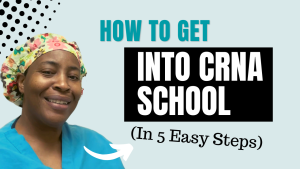
How to Get Into CRNA School In 5 Easy Steps
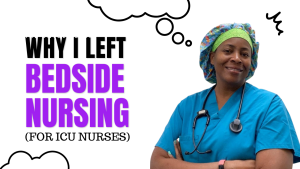
Reasons Why You Should Leave Bedside Nursing (For ICU Nurses)

Stop Letting Fear Hold You Back, Do This Instead!
Creating a plan to get accepted to CRNA school changed my life. It can do the same for you! Ditch fear and get started TODAY!
Quick Links
- Work With Me
Go ahead & grab your FREE “Ultimate Guide to CRNA School Admission”.
© 2023 The CRNA Chase Design by SitePress Powered by Mayarie

CONTACT INFO
856-599-8823
PO BOX 202 Mickleton, NJ 08056
SPONSORSHIP
STATEMENT & RESUME REVIEW SERVICES
Designed to Improve Application Personal Statement & Resume Writing Skills
Personal Statement & Resume Review
The Diversity CRNA Personal Statement and Resume Review Committee exists to support You!
As you move toward your goal of admission to a graduate program in nurse anesthesia, we aim to offer you guidance and feedback to help you stand out as a competitive applicant.
The Review Committee is composed of a diverse group of Certified Registered Nurse Anesthetists who volunteer their time. Each of our CRNA Reviewers works diligently to provide feedback based on set criteria. A completed review includes feedback and suggestions that are tailored to the individual with the goal of highlighting their relevant academic, professional, and personal experiences.
Diversity CRNA provides free personal statement & resume review services plus a personal statement & resume writing workshop. For general inquiries regarding free personal statement & resume review services, please email [email protected] .
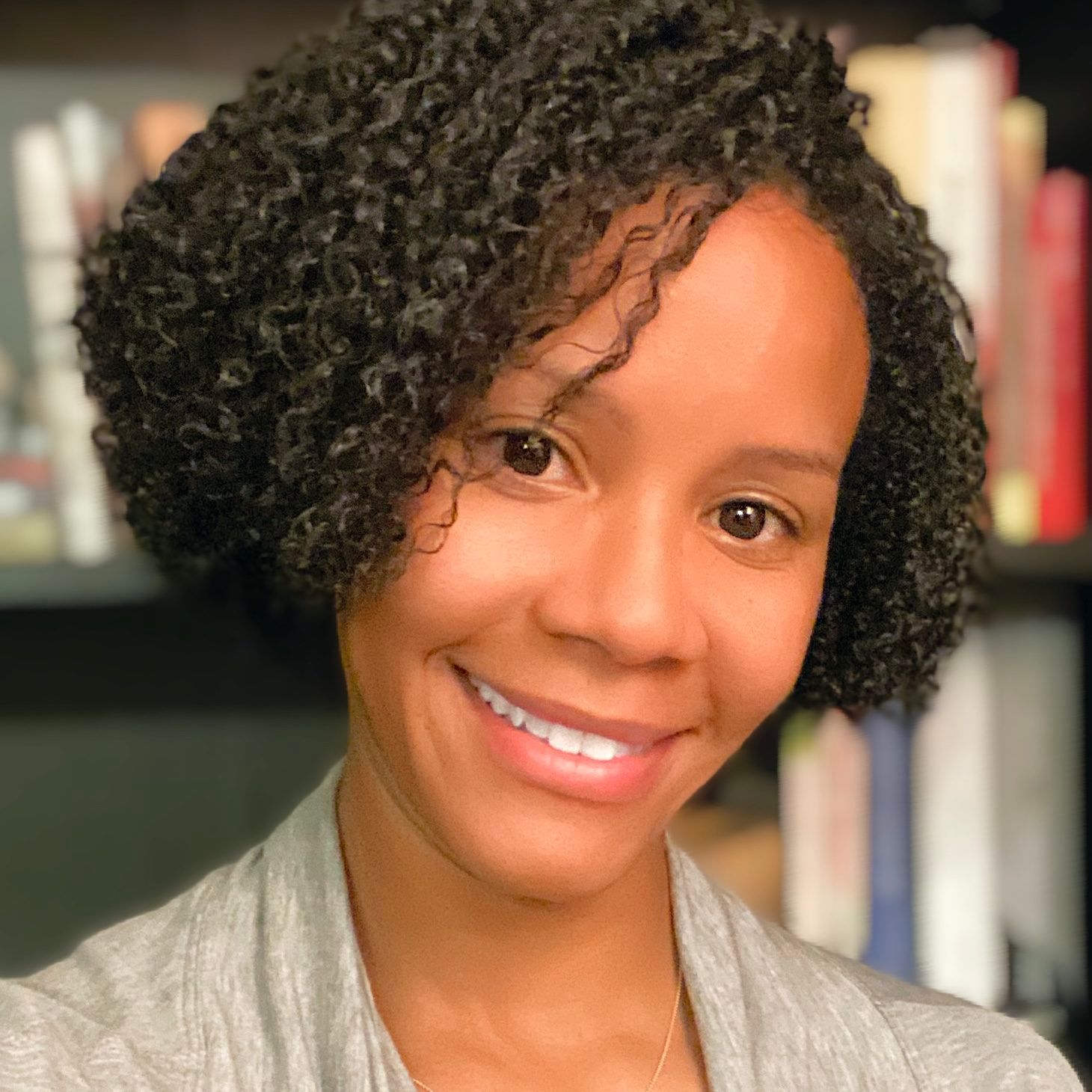
The free service and workshop have supported hundreds of nurses
to finalize their Personal Statements and Resumes!
The personal statement gives the admissions committee a view into who you are as a professional.
It is important that you show...
What makes you, YOU !
Let yourself , your achievements , and your goals come forth in your personal statement.
PREPARE TO SUBMIT
your documents.
- Review the Diversity CRNA Personal Statement and Resume Review Tip Sheet by clicking on the button below.
- Attend a Diversity CRNA Resume and Personal Statement Writing Workshop or view a past event in the Members Only Content by logging into your account.
- Plan ahead! Allow yourself enough time before your application deadline.
- We suggest that you submit to the Committee 2-3 months before your application deadline.
- Although this information is captured during the submission process, please be sure to include your and contact information on each submitted document.
- Submit your documents in Microsoft Word format.
TIME TO SUBMIT
1. Submission Period:
- Open from the 1st to the 7th each month (February through November).
- Closes between 8-9 pm (Eastern Time Zone) on the 7th.
2. Review Process:
- Documents shared with a Diversity CRNA Reviewer.
- Introduction email to your CRNA Reviewer upon submission.
3. Turnaround Time:
- Completed reviews typically returned before the end of the month.
4. Submission Limit:
- Review Committee accepts ONE Personal Statement and Resume per person within a year.
Testimonials
Hear directly from individuals on how the Diversity CRNA Personal Statement & Resume Review Services has assisted them in reaching their professional goals.
Testimonial Disclaimer
The testimonials, statements, and opinions on our website are applicable to the individuals depicted. Results will vary and may not be representative of the experience of others. The testimonials are voluntarily provided and are not paid, nor were they provided with free products, additional services, or any benefits in exchange for said statements. The testimonies are representative of their personal experiences with the Diversity in Nurse Anesthesia Mentorships services, but the exact results and experience will be unique and individual to each participant.
MEET THE COMMITTEE

Rylee Apodaca
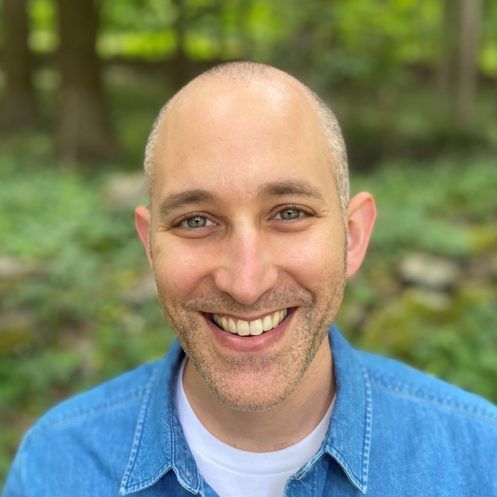
Sherell Bernard

Christina Brown
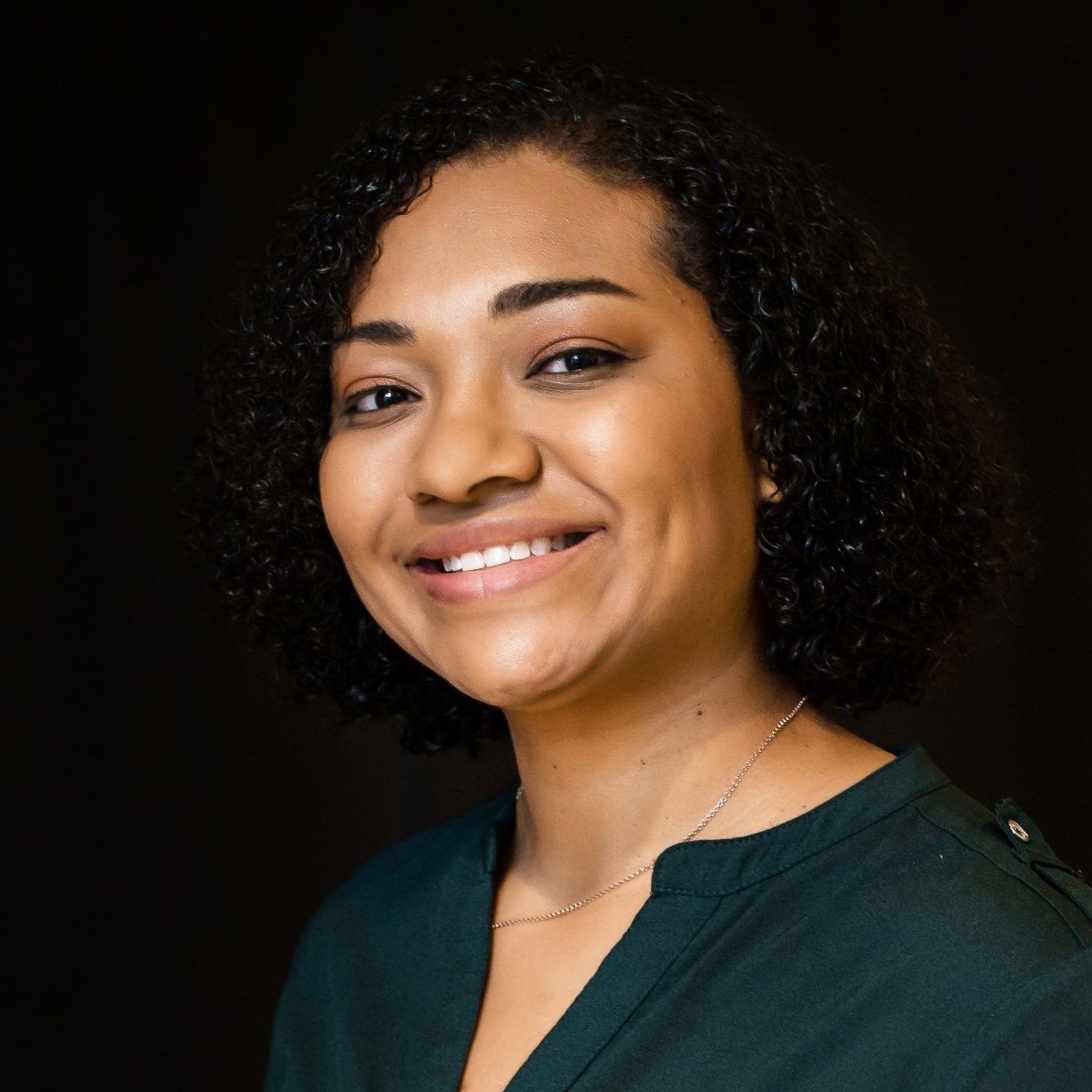
Alexandra Campbell
DNP, CRNA, APRN
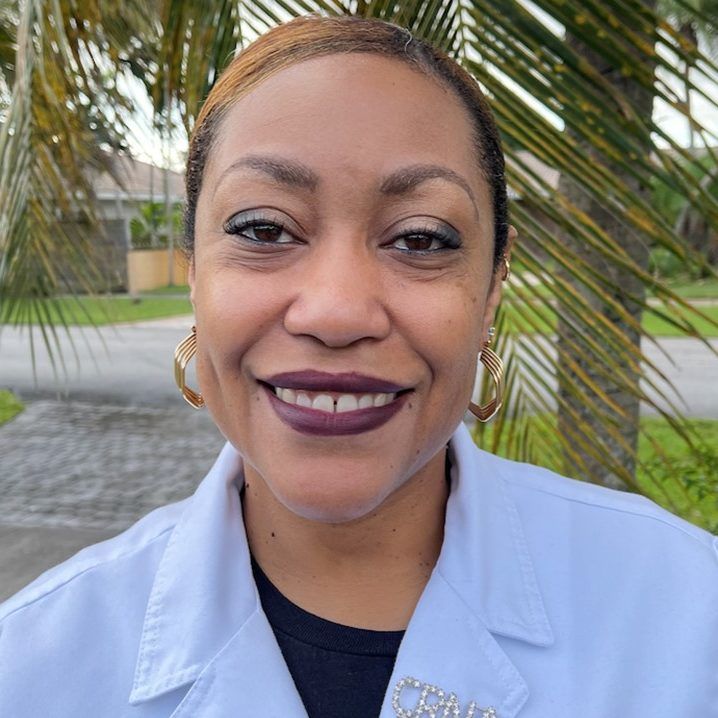
Yasmine Campbell
DNP, CRNA, APRN, CNE, CHSE

Jamilla Churchill
MSN, MPH, CRNA

Amber Coleman
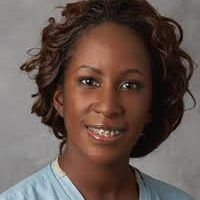
Johanne Daniel

De'Kia Dortch
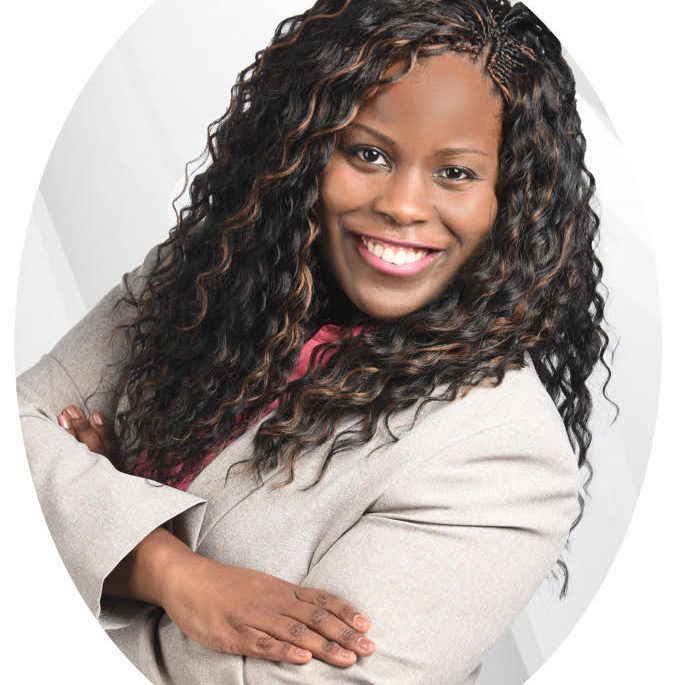
CDR(Sel) Hope Ferguson
DNP, MBA, CRNA, APRN
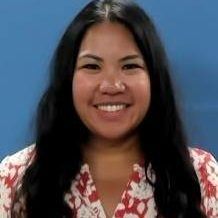
Shawnee Glenn

LaShonda Gray
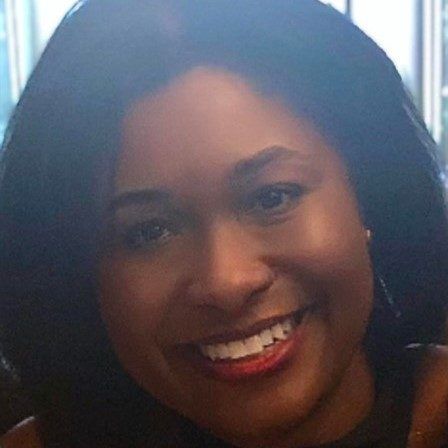
Tish Johnson
MS, MBA, CRNA
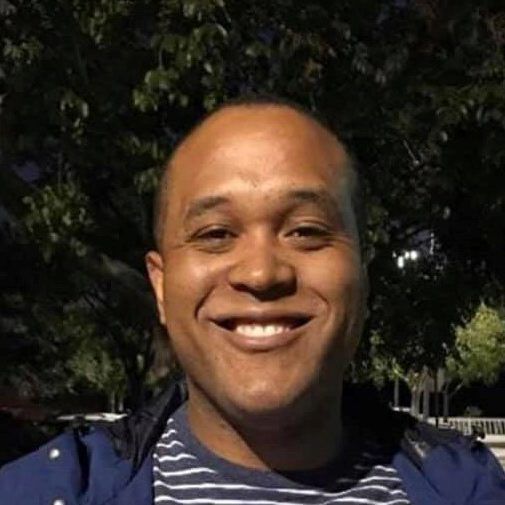
Kenneth Lowe
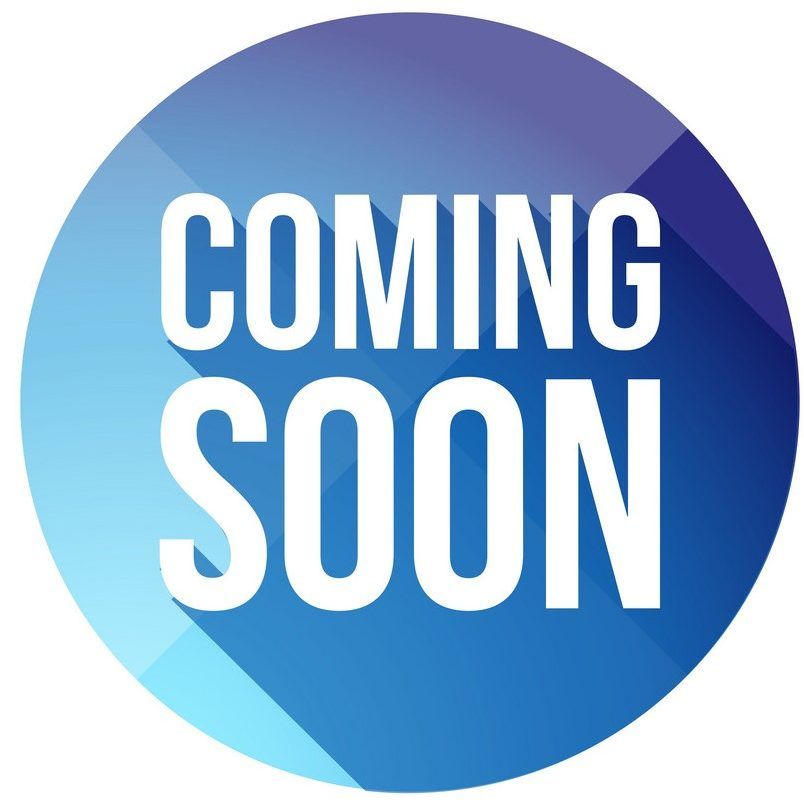
Jennifer Mason
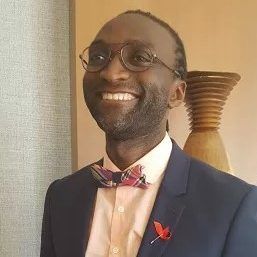
Nkam Mongwa
MBA, MSN, CRNA

Kunle Odubeko
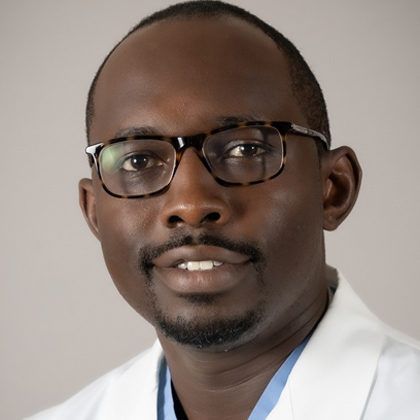
Stephen Okoth

Brianna L. Purnell
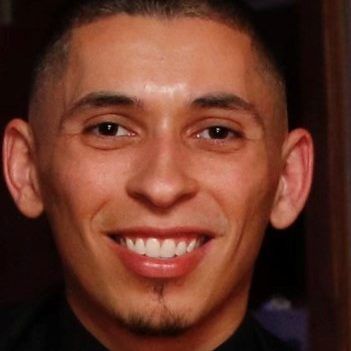
Stephen Sanchez
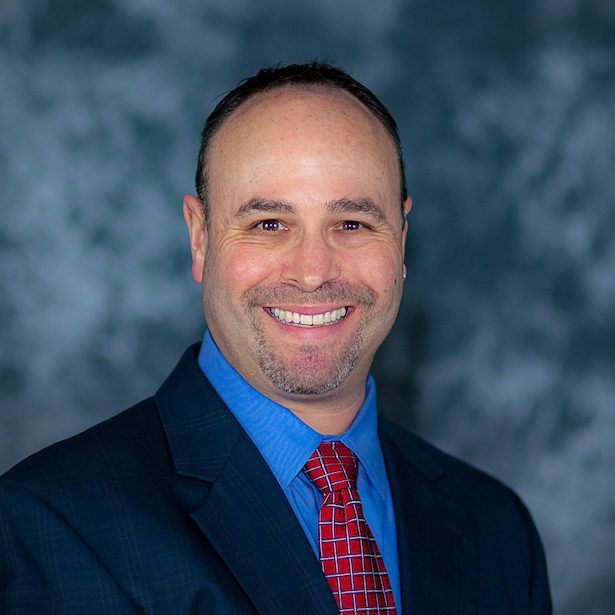
Ron S. Seligman
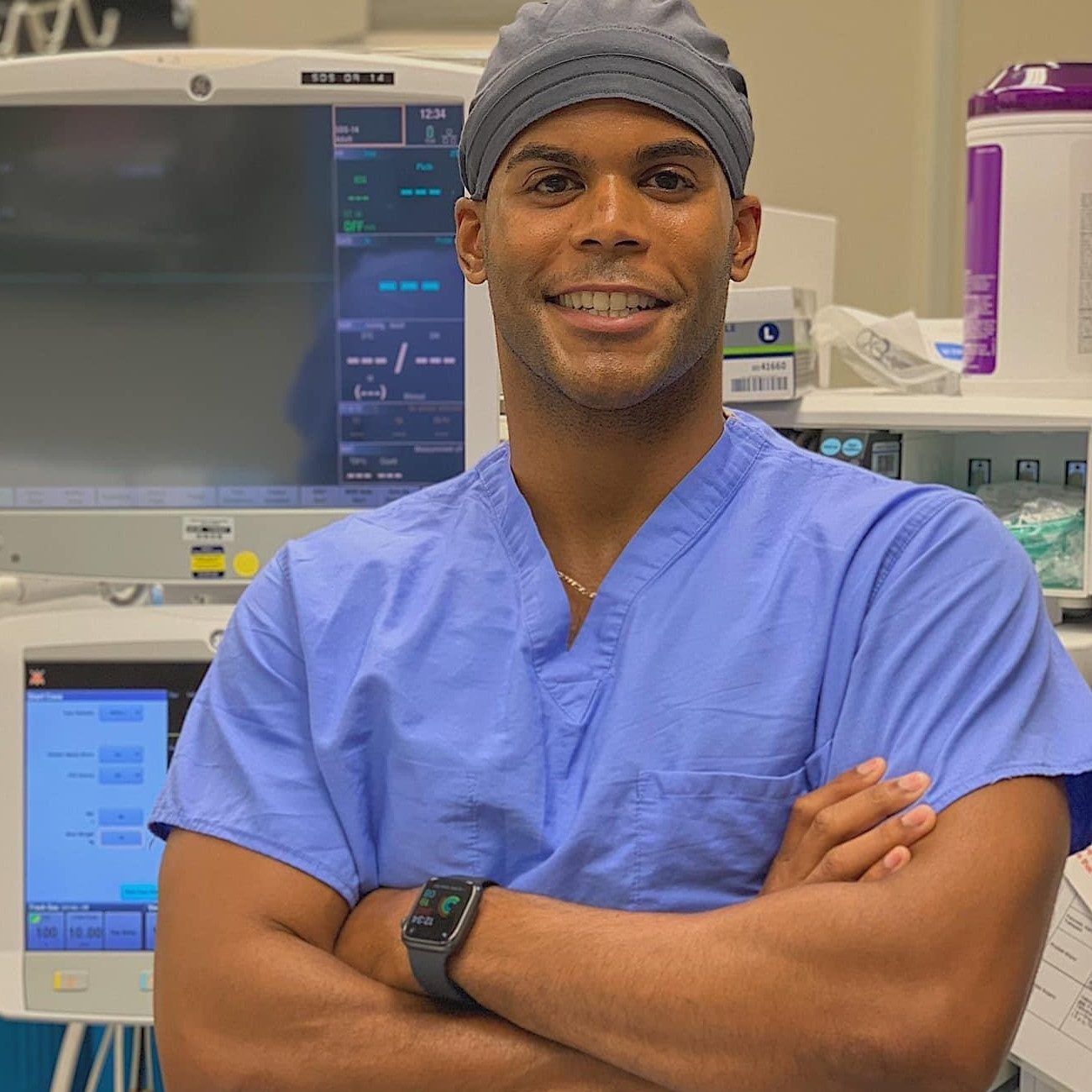
Yosmel Serrano

Henry Sindi
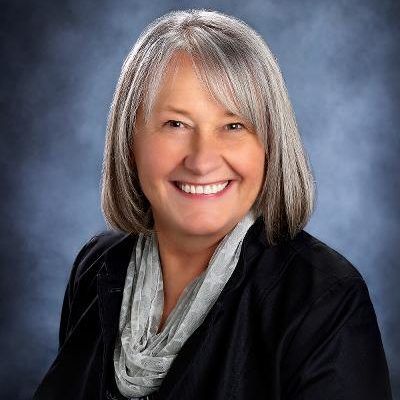
Jeanie Skibiski
DNAP, MHA, CRNA, CPPS, FAANA
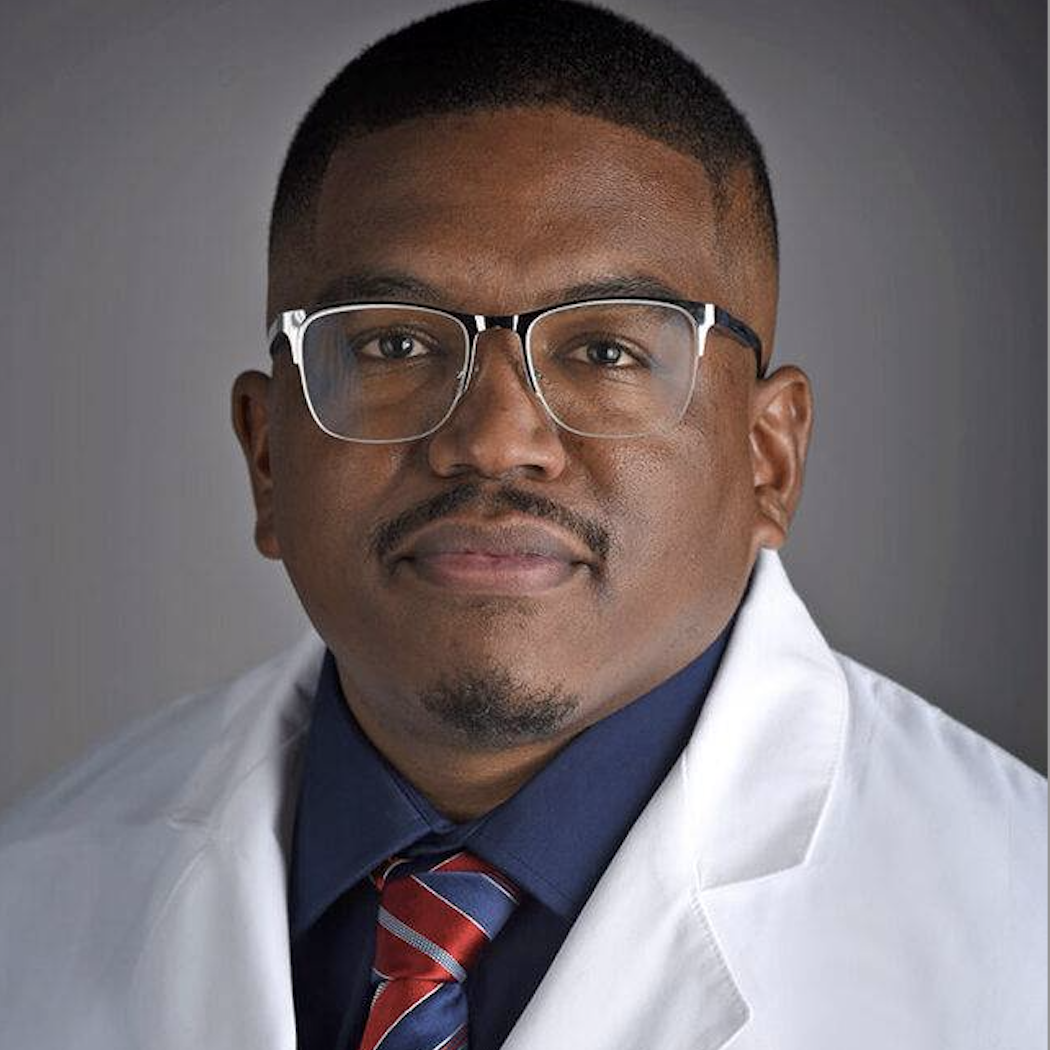
Kendall Smith
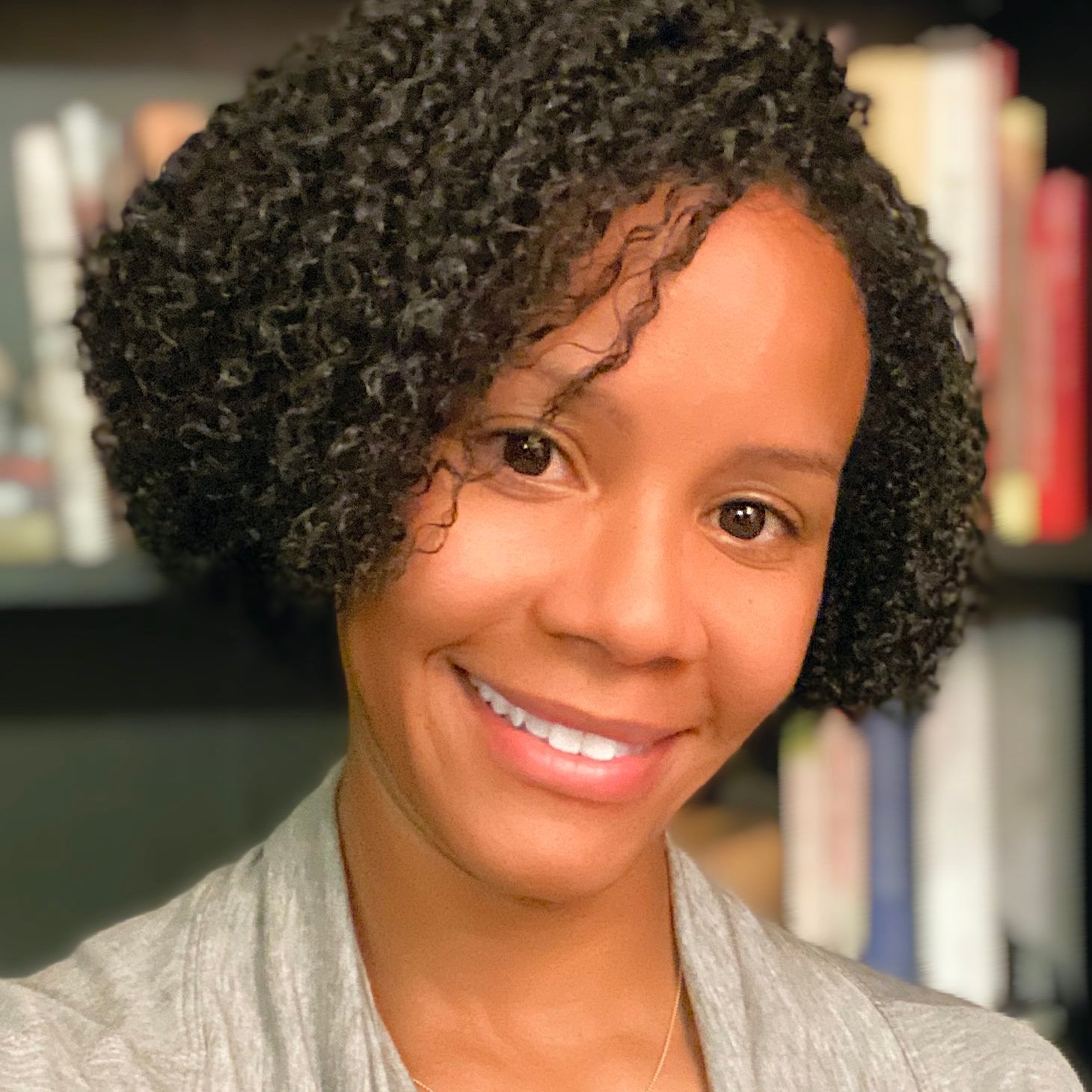
Levia Sutton
Committee Chair

Nathalie Ung
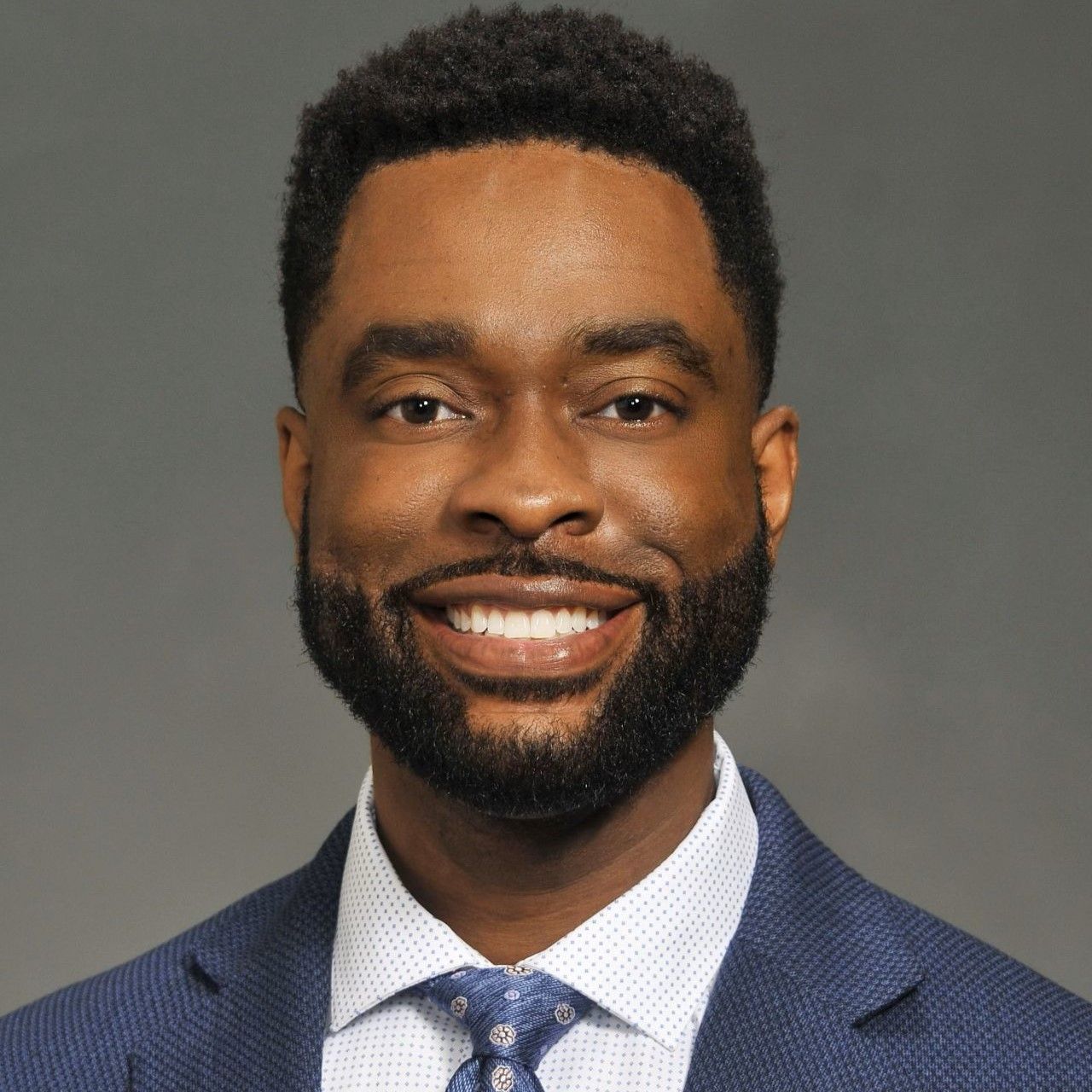
Chuncey Ward
All Rights Reserved | Diversity in Nurse Anesthesia Mentorship | This site is powered by Neon One | Privacy Policy
Photography by Ronald Spatafore
Anesthesiology Residency Personal Statement Examples
With tips for writing a great residency personal statement.
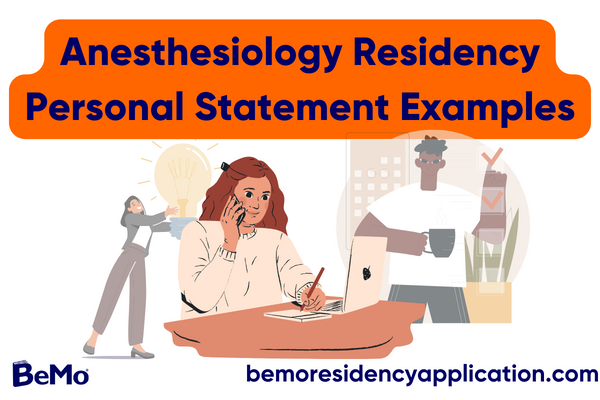
Looking for anesthesiology residency personal statement examples to get a better idea of what to write? Reading some residency personal statement examples is a great place to start as you begin drafting your own personal statement and work on your residency app. It can be tricky to know what to write and how to write what motivated you to study anesthesiology and why you are passionate about a career in the specialty. In this blog, we’ll look at some anesthesiology residency personal statement examples and some tips for writing an awesome personal statement.
>> Want us to help you get accepted? Schedule a free strategy call here . <<
Article Contents 10 min read
Anesthesiology is an interesting and rewarding specialty and securing an anesthesiology residency match is generally less competitive than some other sought-after specialties. Anesthesiology has a high match rate at 94.9% for US MD seniors, so it is not considered one of the most competitive residencies to match into.
Anesthesiology as a medical career requires a great deal of skill and broad base of medical knowledge, particularly in internal medicine. It also demands a good level of surgical skill, dexterity and precision. On top of this, anesthesiologists need to be cool and calm under pressure, able to adapt to changing situations quickly and with authority. They need to be excellent communicators with patients and their fellow medical staff team members. Anesthesiologists are crucial in critical medical situations, and can literally make the difference between life and death, so it’s a challenging but rewarding specialty to pursue.
If you’re curious about how long residency will be, anesthesiology requires a 5-year long residency training and demands a great deal of skill and excellence. But it also has one of the highest rates of job satisfaction among medical professionals, and anesthesiologists are the highest paid medical profession in the US.
Applying for an anesthesiology residency means you will be part of the NRMP match. For US MD seniors, you’ll be applying through the ERAS application , whereas Canadian applicants will be applying through CaRMS for their residency match.
After spending 5 years as an EMT, I made the life-changing decision to go to medical school. My plan was to explore working in an emergency department so I could keep using the skills I had gained as an EMT. On the more extreme side, I was considering becoming a trauma surgeon so I could take my skills to the next level. I wanted to find a specialty as a doctor that would complement the skills I had and also push me into an entirely new realm. Soon enough, though I came to the realization that my possible new career paths were leading me right back to the origin point. I wanted to go back to school and stop being an EMT because I needed a break from the work, and I needed a change. If I did fulfill my wish to work in emergency medicine or surgery, I would instead be adding on more of the aspects of the job I wanted to change.
Working as an EMT is very rewarding, but it can have its setbacks. If you’re lucky, you will have a “boring” career where you won’t see any terrible, truly traumatizing calls. But not all of us are so fortunate. It’s true that not every call is to an awful accident or disaster. But there are always calls that stay with you. It was one such call that has stayed with me, that prompted me to make this change in my career trajectory. And it was the call that convinced me my future was in anesthesiology and not surgery or emergency med.
When we arrived at the scene of this collision, its easy to overlook something. Contrary to what we think, vehicle collisions don’t always leave a giant trail to follow. The car had bowled through the guardrail in bad weather and careened straight into the ravine on the other side. A bent guardrail, not entirely uncommon, was the only sign if you didn’t know what to look for. It takes precious minutes to gear up and descend a steep ravine with ropes and harnesses and helmets. Our headlights eventually illuminated the sight of the crumpled car and its two passengers. I was on the driver’s side, working to cut through to the patient, while my partner rescued the passenger. I’d had plenty of patients be miraculously conscious and talking with me as I worked, but it’s always amazing how much pain the brain can numb us to. When a patient tells you he can’t feel anything, it stops your heart. When he passes out, it goes into overdrive. I worked with this patient, still pinned inside the car, for untold minutes before I was able to get him back. We carried him out of that ravine and into the ambulance all the way to the hospital. I stayed with him the entire time, monitoring his vitals. He remained unconscious, but I handed him off to the ER staff with the hope that he would make it through. As an EMT you don’t get to find out. You’re the first responder, the person responsible for keeping someone alive until they can get to the hospital. It started the desire to be the person in there with the patient, seeing them through, instead of being the one to discover and rescue them.
Anesthesiology appeals to me because it will allow me to further develop my skillset and demand an even greater amount of training and discipline from me. But it will steer me away from the more demanding and stressful aspects of my former career. I know as an anesthesiologist my job will not always be routine and calm, but I have shown I can roll with the punches and adjust to unexpected situations. But as a career this specialty will give me room to breathe, so I can focus on helping patients, easing their pain. As an anesthesiologist you’re a critical part of the team. As an EMT, even if many others working with you, it can often feel lonely. You against the problem, with the stakes literally life and death. In anesthesiology the stakes are the same, but you’re not the only lifeline.
I believe my experiences and skills will make me an ideal anesthesiologist. I have always been sure of what I wanted to achieve in my medical career, and I believe this specialty will be the best way for me to fulfill it in a way that both helps patients and helps me to keep growing as a medical professional.
Still deciding on your residency career? Check out this infographic on resident career counseling services.
I remember the first time I was able to watch a child succeed. As a teenager, I took on some part-time babysitting jobs to bring in extra cash. I rotated with a few different families in the neighborhood, but there was one child, Casey, who stood out. All kids have unique and naturally captivating personalities, but Casey was a neon pink light on a string of Christmas lights. She was loud and passionate and colorful. She loved dance more than anything. When I watched her compete in her dance company’s Spring Recital, executing the movements she’d spent so many weeks perfecting, the biggest smile on her face, it occurred to me how amazing it is to witness a child succeed in their goals, and how humbling it feels to be a supporting pillar for them.
Casey’s journey to the Spring Recital had setbacks, obstacles and plenty of work. But her optimism, natural talent and hard work saw her through. Kids are resilient, no matter the challenge. As a volunteer at the Miller Foundation Children’s Hospital, this was proven to me over and over as I witnessed the journeys of dozens of kids fighting the toughest battles anyone can face. Whether they were undergoing chemo, facing a trauma or getting a commonplace operation, these kids faced it with all the bravery and resilience Casey had shown me in preparing for her dance recital. With Casey, it was endless practice, encouragement, and advice. The rest was on her. With the children I worked with in the hospital, it was difficult at first to accept that I couldn’t fight the battle for them. All I could do was be a supporting character, showing them care and encouragement and positivity. It was up to them to do the rest. And just like Casey taking her final bow, they blew me away every time.
In working with children for so many years, I came to realize how important and how underrated it is. Parents, I know, want to decide the outcome of all their children’s efforts, to make sure they always reach their goals. But being there and supporting them often does so much to counter the fear of an unfamiliar and scary situation. Being a calm, steady presence gives kids something to hold onto when they’re undergoing a procedure or even getting a needle in the arm. In what will be some of the most frightening scenarios in a young child’s life, it was incredibly fulfilling for me to be able to hold a hand or offer words of encouragement and see the tiniest bit of a smile in return.
As I continued with my medical studies, I realized my original dream of becoming a pediatrician could be adjusted. As an anesthesiologist, I can be that calming, soothing person who is with a child undergoing a scary medical procedure, walking them through, offering support, seeing them through to process. I would not have missed Casey’s recital performance for the world and knowing that my support meant something to her makes all my efforts worth it. I can only imagine how magnified those feelings are for sick kids facing the hardest battles they will ever face, knowing they have someone in their corner. It is my goal to show up for kids like this, to soothe their pain, to talk with them through their fears, to ensure they know they’re not going through this alone.
I have continued to work at the Miller Foundation Children’s Hospital as a volunteer and was fortunate to be able to shadow some of our best anesthesiologists. One of them was also kind enough to write one of my recommendation letters. In the future, I plan to pursue a fellowship in pediatric anesthesiology, so I might realize my goal and keep working with all those bright, beautiful kids who inspire me to follow their example.
Preparing for your residency interview? Watch this video!
Anesthesiology residency personal statement example #3
I have always prided myself on being the type of person to take action and do what needs to be done. I have never been the kind of person who sits idle and have always had at least two hobbies on the go at the same time I threw myself into athletics, academics and extracurriculars. I’ve always had a multitude of interest and an abundance of energy. I participated in clubs, music lessons, sports, leadership clubs, mathlete decathlons. I was constantly looking for the next challenge, the next big thing to learn or achieve or complete. As a classic overachiever, I strived to do everything. My one problem was trying to do everything at once, all the time.
When I applied for medical school, my achievements and drive for excellence and diversity in my interests was a huge plus. It helped me succeed at school, balance my studies, work and personal life. It ensured I fought against medical student burnout by staying engaged and hungry to keep learning and experiencing everything medical school had to offer me. I soaked up every lesson and new opportunity I could, hardly pausing to take a breath, much less slow down. Just as I’d had so much trouble narrowing down my interests and ambitions to one singular goal, I struggled in med school to choose a specialty, to focus on just one thing. I wanted to try too many things. Everything was new and interesting, and I could see myself doing any of them. But I knew eventually I would need to find my place. And it was in medical school I experienced something that changed my entire perspective.
The rotation I most looked forward to was my turn in gynecology and obstetrics. Maybe not the most popular rotation, but I had held onto a passion for women’s advocacy and health from my high school and university days, and I found the prospect of working in obstetrics ranked just a bit higher on the list than some other equally fascinating specialties. While assisting with a pregnant patient who was due to be induced, complications came up and her blood pressure dropped. The head of the medical team rushed in, directing me and my colleagues. As expected, I jumped into action, but our initial efforts produced no changes. The anesthesiologist arrived on scene in what I think was just in time. They stepped right in to take over the patient’s care and were able to successfully intubate her so she could be taken into surgery for an emergency c-section. Throughout the tense ordeal, which lasted only a few minutes, I was blown away by the calm confidence of the anesthesiologist. I know in a crisis I can think on my feet, take action and get the job done, but my heart will be racing and my mind whirling. The anesthesiologist approached the same emergent situation with a level of cool headedness that inspired me. Seeing them act as the patient’s literal lifeline while the team transported her to the OR, keep their calm and intent focus, I realized how often we forget that life-saving care doesn’t rely on one capable person directing a team. It requires a capable team, and it requires a teammate who can not only do it all but do the one critical thing perfectly.
Anesthesiology will be a perfect match for me, as it will allow me to help people in a direct and rewarding way. It also matches well with my natural demeanor and action-oriented personality. I believe anesthesiology will give me the focus and calm I have wanted to achieve, by allowing me to hone my talents and energies into a life-saving and critical skillset. My goal is to pursue a career in obstetric anesthesiology, so I can continue to work with mothers and mothers-to-be, advocating for women’s health and well-being. I believe if there were more anesthesiologists such as the one I met, that women preparing to give birth would have one more lifeline in the delivery room and more of a chance to deliver safely for themselves and their newborns.
Writing may not be your strong suit, or maybe you want some expert eyes on your personal statement for this critical residency application. Either way, getting some feedback from residency match services or a residency advisor is a great way to polish your personal statement or identify the most compelling experiences to mention from med school, clinical rotations, research opportunities or even your early years. For international medical graduates, an IMG residency consultant can help you organize your application and find those compelling stories in your background to highlight in your personal statement. ","label":"Consult the experts","title":"Consult the experts"}]" code="tab1" template="BlogArticle">
Anesthesiology is not considered the most competitive residency. For US MD seniors, the match rate is very high at 94.9%. It is also considered a specialty that is more friendly towards international medical graduates and DO seniors.
A residency personal statement is usually about one page long, or between 500-750 words.
Start your personal statement off with a “hook” or attention-grabbing first sentence. It’s a good idea to start with a strong statement or start telling a story to reel your reader in.
A great personal statement will be polished and free of errors, with a serious but conversational tone. It’s also best to use some storytelling and provide details about the past experiences you have which led you to apply to the program.
Anesthesiology residency training lasts 5 years.
Your personal statement should include your motivation for applying to the program, explain why you are the best candidate to fill the position and any attributes or accomplishments of yours that made you a good fit.
Avoid using cliches or repeating information that can be found in your residency CV. Your aim is to tell a program about who you are and why you are a good fit, not to simply restate your academic and professional accomplishments.
Anesthesiology can be a demanding specialty and it requires many years of training. However it is also a specialty with a very high pay rate and high job satisfaction, so for some residents it can be the start of an exciting and very rewarding career.
Want more free tips? Subscribe to our channels for more free and useful content!
Apple Podcasts
Like our blog? Write for us ! >>
Have a question ask our admissions experts below and we'll answer your questions, get started now.
Talk to one of our admissions experts
Our site uses cookies. By using our website, you agree with our cookie policy .
FREE Training Webinar:
How to make your residency application stand out, (and avoid the top 5 reasons most applicants don't match their top choice program).
Nurse Anesthesia Admission
Application dates.
- Open: June 1st
- Close: August 1st
- Supporting document deadline: August 1st
- Minimum Science GPA - 3.2 on a 4.0 scale
Holistic Admissions
Duke School of Nursing is committed to holistic admissions.
A holistic review is a university admissions strategy that assesses an applicant’s unique experiences alongside traditional measures of academic achievement such as grades and test scores. It is designed to help universities consider a broad range of factors reflecting the applicant’s academic readiness, contribution to the incoming class, and potential for success while in school and post-graduation. When used in combination with a variety of other mission-based practices, holistic review constitutes a holistic admission process.
Many colleges and universities have employed a holistic admission process to assemble a diverse class of students with the background, qualities, and skills needed for success in the profession.
Admission Requirements
Visit the Apply Now page for details, and read on for the Nurse Anesthesia Program specifics.
The following requirements must be met before consideration for admission into the Nurse Anesthesia program:
Bachelor's degree with an upper-division nursing major from a program accredited by the Accreditation Commission for Education in Nursing ( ACEN ) or the Commission on Collegiate Nursing Education ( CCNE ).
Completion of an application for admission, including copies of all post-secondary educational transcripts.
Basic Life Support; Advanced Cardiac Life Support ( ACLS ) certification & Pediatric Advanced Life Support (PALS) certification.
Cumulative undergraduate grade point average of 3.0 or higher (4.0 scale) or evidence of outstanding graduate academic achievement.
The minimum science GPA is 3.2 on a 4.0 scale.
Bachelor's or post-bachelor's coursework must include satisfactory completion of a course in descriptive and inferential statistics.
As part of our holistic admissions process and review, the Duke University Nurse Anesthesia Program no longer requires the GRE.
Personal interviews (by invitation) with members of the Nurse Anesthesia Admission Committee will be offered to qualified applicants. Applicants selected for interviews are usually notified on a rolling basis.
At the time of application submission, the applicant must have a minimum of one year (two years preferred) of current, continuous full-time acute care experience as a registered nurse in a critical care setting which offers the applicant an opportunity to develop as an independent decision-maker capable of using and interpreting advanced monitoring techniques based on their knowledge of physiological and pharmacological principles. Adult acute care experience offering on interpretation and use of advanced monitoring, care of ventilated patients, pharmacologic hemodynamic management, and independent decision-making is preferred. CCRN certification is strongly encouraged. Experience areas preferred include:
Surgical Intensive Care
Medical Intensive Care
Cardiac Intensive Care
Neuro Intensive Care
Pediatric or Level III Neonatal Intensive Care Unit
Trauma Intensive Care
Applicants hold an unencumbered license as a registered professional nurse and/or an APRN in the United States or its territories or protectorates.
Applicants must possess the physical and mental skills necessary to complete the School of Nursing curriculum . (Submission of a personal statement describing the applicant's personal career goals and interest in graduate study.
Test of English as a Foreign Language ( TOEFL ) scores from applicants whose native language is not English or who have not completed their high school and college education in the U.S. (Refer to the Duke University School of Nursing Application Admissions Procedures: Additional Requirements for International Applicants )
Submit the completed application and all supporting documents no later than August 1, preceding the August matriculation date. Incomplete applications will not be considered after the August 1 deadline.
Successful completion of the nurse anesthesia program (83-course credits) requires a substantial time commitment averaging 54-64 hours per week (including class time, clinical, and study time) during the 36-month program.
The curriculum is designed for 36 months of full-time study. Historically, given the rigorous nature of the program, students find it challenging to subsidize their educational expenses through part-time employment.
Application Procedure
Due to strong demand and limited class size, early application is encouraged. The Office of Admissions and Student Services must receive the completed application with all supporting documents (evaluation forms, transcripts, licenses, proof of certifications, current CV, etc.) before August 1st of the year of desired admission (August matriculation). Incomplete applications will not be considered after the August 1st deadline.
Application Review
Once the application is complete, admissions officers will review it to ensure application criteria are met then the file will be forwarded to the Nurse Anesthesia faculty. Candidates will be notified of the interview decision via e-mail through the Office of Admissions and Student Services. If an applicant is selected for an interview, they will receive an e-mail inviting them to participate in an on-campus interview day. After interviews, each student will be notified whether they are admitted, waitlisted, or declined. Official decision notifications are typically released within 1-2 weeks of interviews. If admitted, complete an online enrollment form and submit a $1,000 deposit to confirm acceptance into the program.
Supporting Documents Required by the Office of Admissions and Student Services
Official transcripts from all previous colleges, universities, and graduate schools attended. Transcripts must be submitted regardless of when you attended, how many hours you earned, or whether you earned a degree.
Transcripts must be received in a sealed envelope from the issuing institution to be considered official. You may also collect sealed transcripts and send them together in one large envelope.
Duke University School of Nursing will accept electronic transcripts sent directly from the issuing institution(s). These documents can be emailed to [email protected] .
Photocopy of current, unencumbered nursing (RN) license.
Proof of current certifications as stated on the application (Basic Life Support, Advanced Cardiac Life Support, Pediatric Life Support, CCRN , etc.).
Three professional references attesting to academic ability, professional competency, and professional qualifications are required. One reference must be from an immediate supervisor and include a contact phone number.
Application fee of $50.

Certified Registered Nurse Anesthetist (CRNA)
New admissions deadlines: application period is from june 1 - august 1. .
New Documents Deadline: All official documents must be submitted by September 1.
Certified Registered Nurse Anesthetists (CRNAs) are advanced practice nurses who enjoy a high degree of autonomy and professional respect. CRNAs provide anesthetics to patients in every practice setting, and for every type of surgery or procedure. They are the sole anesthesia providers in nearly all rural hospitals, and the main provider of anesthesia to the men and women serving in the U.S. Armed Forces. To learn more, please visit the American Association of Nurse Anesthetists: www.aana.com
Doctor of Nursing Practice Degree Program Overview
The Doctor of Nursing Practice degree program of the Loma Linda University School of Nursing, Nurse Anesthesia Concentration offers a didactically front-loaded, 39-month, full-time graduate curriculum designed to educate critical care registered nurses in the nurse anesthetist role across the lifespan. The program’s curriculum follows the American Academy of Colleges of Nursing’s Essentials of Doctoral Education for Advanced Nursing Practice and the Council on Accreditation of Nurse Anesthesia Educational Programs’ (COA) Practice Doctorate Standards for Accreditation of Nurse Anesthesia Programs. It consists of graduate-level core nursing courses, nurse anesthesia concentration courses, clinical courses and Doctor of Nursing Practice Inquiry Project courses. It is designed to move students from foundational content through concepts and principles necessary for anesthesia practice to a clinical practicum sequence for learning and refining of professional clinical practice.
The program is fully accredited by the COA as a Distance Education Program and has been designed to take advantage of available distance education technologies to enhance curriculum effectiveness and flexibility. Courses are delivered via both traditional classroom and hybrid distance education formats.
Upon completion of the program, graduates are expected to:
1. apply advanced levels of clinical judgment and systems thinking
2. function as an advanced practice nurse
3. plan, implement, and evaluate evidence-based strategies
Graduates are awarded a Doctor of Nursing Practice degree and are eligible to take the National Certification Examination (NCE) that is offered by the National Board on Certification and Recertification of Nurse Anesthetists (NBCRNA).
Admission Requirements
Admission to the Nurse Anesthesia Concentration follows applicable policies and procedures of LLU and the School of Nursing and is overseen by the Nurse Anesthesia Concentration Admissions Committee. This committee intends that applicants are qualified for the proposed curriculum and capable of benefiting from the educational experience. This is accomplished through examination of evidence of scholastic competence, requisite licensure, clinical experience, moral and ethical standards, and significant qualities of character and personality. The application period is from June 1 - August 1. All official documents must be submitted by September 1.
- Application with personal statement.
- An on-line questionnaire will be generated once the application is submitted. The questionnaire must be completed by the applicant before the admission deadline.
- Baccalaureate or Master's degree in nursing from a regionally accredited program.
- Cumulative GPA – 3.0 or higher.
- Science GPA - 3.0 or higher.
- Unrestricted Registered Nurse license in the United States; unrestricted Registered Nurse license in California before matriculation and must be maintained until program completion.
- Minimum 1 year, full-time critical care RN experience (in the U.S.) at time of application (excluding orientation). Critical care experience must be obtained in a critical care area within the United States. During this experience, the registered professional nurse must have developed critical decision making and psychomotor skills, competency in patient assessment, and the ability to use and interpret advanced monitoring techniques. A critical care area is defined as one where, on a routine basis, the registered professional nurse manages one or more of the following: invasive hemodynamic monitors (such as pulmonary artery catheter, CVP, arterial); cardiac assist devices; mechanical ventilation; and vasoactive infusions. Examples of critical care units may include Surgical Intensive Care, Cardiothoracic Intensive care, Coronary Intensive Care, Medical Intensive Care, Pediatric Intensive Care, and Neonatal Intensive Care. Those who have experiences in other areas may be considered provided they can demonstrate competence with managing unstable patients, invasive monitoring, ventilators, and critical care pharmacology. Critical Care Transport (CCT), Flight Nursing, or Emergency Room will not be considered as critical care experience.
- Current certifications: BLS. ACLS and PALS are required before clinical courses begin and must be maintained until program completion.
- Current ICU Director or person responsible for yearly evaluation
- Current ICU Charge Nurse
- Spiritual advisor/Clergy
- Interview granted by Nurse Anesthesia Admissions Committee
- Clinical observation with CRNA - 8 hours (no official documentation required)
- CCRN certification
Transcript Requirements
You must submit transcripts from all post-secondary institutions that you have attended, regardless of whether or not it applies to your prerequisite coursework. This includes all colleges, universities, military credit, Advanced Placement, CLEP, and unaccredited schools. Transcripts must be sent by the issuing institution(s) directly to LLU Admissions Processing. Transcripts provided in any other manner are unofficial and will not be accepted for admission.
Please have official transcripts sent to:
Admissions Processing Loma Linda University 11139 Anderson St Loma Linda, CA 92350 USA
Clinical Facilities
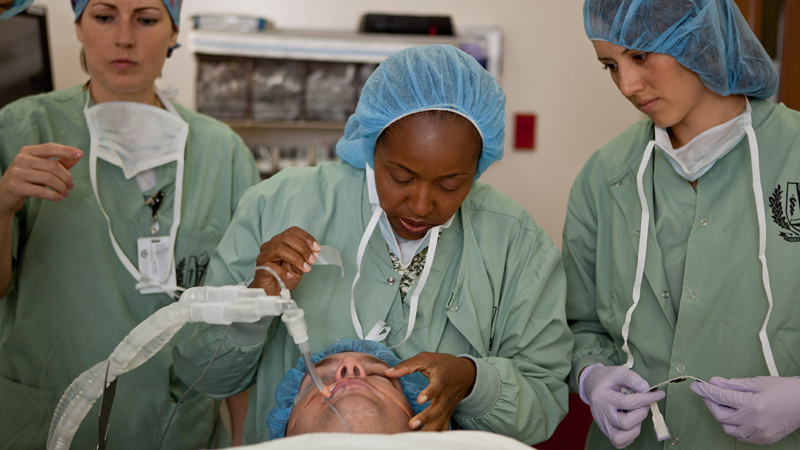
LLUMC Facilities
- LLUMC & Children’s Hospital
- LLUMC East Campus Hospital
- LLUMC Outpatient Surgery Center
- LLUMC Surgical Hospital

Affiliated Clinical Rotations
Clinical affiliations have been established with health care institutions within Central, Northern and Southern CA as well as an enrichment site in Ohio. Housing is provided for clinical rotations that are greater than 90 miles from Loma Linda University.
Student Benefits and Insurance
Student health plan.
The University-sponsored Student Health Plan is designed to provide comprehensive medical coverage for the student and his/her eligible dependent(s). The plan includes coverage for hospital care, surgery, emergency care, prescription drugs, and more.
Please see the Loma Linda University Web site for Student Health Services for a complete explanation of the Student Health Plan
The Drayson Center
Students are granted full access to the Drayson Center, Loma Linda University’s recreation and wellness center. The center includes:
- A 21,000 square-foot multipurpose gymnasium, which may accommodate three full-sized basketball courts, five volleyball courts, or nine badminton courts.
- An elevated, rubberized, three-lane running indoor track.
- Five racquetball courts with viewing areas.
- Fully equipped men’s and women’s locker rooms.
- Aerobics studios and cardiovascular and fitness areas equipped for strength training, sports conditioning, body building, and power lifting.
- A 22-foot-high, 150-foot water slide ending in the nearby recreational pool.
- An outdoor Jacuzzi and indoor saunas.
- Six tennis courts
- A 400,000 square-foot multiuse recreational area with four softball fields, a half-mile-long track; and picnic and game areas.
The Drayson Center offers lifetime leisure classes (noncredit), such as low– and high-impact aerobics, ballet, karate, and judo. The Wellness Office offers personal training, massage therapy, and individual nutrition counseling and group nutrition classes with a registered dietitian.
For more information, visit https://drayson.llu.edu/
Accreditation and Performance Data
Loma Linda University School of Nursing, Nurse Anesthesia Concentration is fully accredited as a Distance Education Program by the Council on Accreditation of Nurse Anesthesia Educational Programs (COA). The Program received the maximum 10 year re-accreditation in 2017 and is scheduled for its next review by the COA in Spring of 2027.
The California State Board has approved all programs offered at the Loma Linda University School of Nursing. Students who decide to pursue a license in another state should check with the applicable licensing authority in that state.
Council on Accreditation of Nurse Anesthesia Educational Programs 10275 W. Higgins Rd., Suite 906 Rosemont, Ill. 60018-5603 Main Number: 224-275-9130
- Email: [email protected]
- Web: http://coacrna.org
*Within four months of completing the program
**93% of students passed the NCE within four months of completing the program
Curriculum Plan
Curriculum Plan for CRNA at Main Campus LLUH
Cost of Attendance
View Expected Cost of Attendance Here
Eugene Applebaum College of Pharmacy and Health Sciences
- Admission requirements
To be eligible to apply to the Nurse Anesthesia program, applicants must have the following:
- Baccalaureate or graduate degree in nursing from an accredited program
- A minimum of one undergraduate course (3 credits) of Chemistry: Organic or Biochemistry (No General Chemistry) taken within 10 years of application with a final grade of "B" or higher
- A minimum of one undergraduate course (3 credits) of Microbiology or Anatomy & Physiology taken within 10 years of application with a final grade of "B" or higher
- Overall minimum GPA of 3.0 or higher for the last 60 credits completed
- Overall minimum Nursing GPA of 3.0 or higher
- Overall Science GPA of 3.0 or higher
- Current RN licensure
- Current Advanced Cardiac Life Support (ACLS)
- Current Pediatric Advanced Life Support (PALS)
- CCRN Certification
- Currently employed in an ICU (SICU, MICU, CICU, Neurotrauma, Pediatric ICU in an academic teaching setting). PACU and ER employment are not accepted as ICU experience, with a minimum of one year full-time ICU experience.
- Shadowing experience at your hospital of employment.
- Applicant Personal Statement a summary (1-2 pages) double-spaced highlighting your professional nursing career. Please include reasons for desiring the nurse anesthesia profession.
- Three (3) professional references are required two (2) from current ICU RN co-workers and one (1) from your immediate RN ICU supervisor. You will send the requests electronically in CAS to the three individuals you want to complete them and these individuals must submit their completed recommendations electronically via the Centralized Application System.
- Completed application submitted by June 1 and verified by July 1. The application is available February 1-June 1. Verification can take up to 6 weeks, so it is mandatory that you submit the application at least 6 weeks in advance, so it is verified by the July 1 deadline.
- If coursework was completed at a non-US institution, students must obtain a course-by-course evaluation of their transcripts by World Education Services: www.wes.org . The results of the evaluation must be sent to Wayne State University and the Centralized Application System.
- Complete WSU Graduate Application at time of admission offer.
All deadlines noted on this website must be abided by in order to be considered for admission to the WSU NA program. Due to the highly competitive nature of admission to this program, successful completion of all admission requirements does not guarantee admission to the program.
If you have additional questions, you may also want to review the frequently asked questions about the NA program admissions.
Personal interview
A personal interview will be granted to select individuals who meet all admission requirements and have submitted the CAS application.
Completion of the personal interview does not guarantee admission to the Wayne State University Nurse Anesthesia Program. Admission to the program is competitive . Students who are offered admission to the WSU NA program will have a Criminal Background Check performed by Certiphi, Inc. Matriculation into the program will depend on the results of that check, and successful completion of the WSU Graduate Application.
No coursework may be transferred or substituted for credit into the DNAP curriculum.
- Action for Change
Nurse Anesthesia
- How to apply
- Information meetings
- Links of interest
- Pre-Health Sciences mentoring
- Program and curriculum
- Research and service
- Scholarships
- Why choose WSU
- Occupational Therapy
- Physical Therapy
- Physician Assistant Studies
- Radiation Therapy Technology
- Radiologic Technology
Mary Walczyk Program Director 313-577-7689 [email protected]
WSU NA on Twitter
259 Mack Avenue Detroit, MI 48201 313-577-1716 [email protected]

Privacy and University Policies
Wayne State University © 2023
2024 Minneapolis Graduate Commencement information and livestream First year students submit deposit here
- Find My Program
- Apply for Admission
- First-Year Undergraduate Student
- Online/Adult/Graduate Student
- Doctor of Nursing Practice...
Doctor of Nursing Practice Nurse Anesthesiology (DNP)
Expand your impact as a nurse. become a crna..
At the heart of patient care lies the crucial role of delivering safe anesthesia. Are you ready to embark on a rewarding journey in Nurse Anesthesiology? Our fully accredited program at Saint Mary’s University of Minnesota is designed to empower qualified registered nurses to elevate their education and become doctorally-prepared Certified Registered Nurse Anesthetists (CRNAs)*.
The demand for nurse anesthetists is poised to soar by a staggering 40% until 2031, reflecting the vital need for skilled professionals in this specialized field. A career as a CRNA has a promising future, one with opportunities for advancement and mobility throughout your career. CRNAs have a high level of job satisfaction, which is attributed to greater autonomy in delivery of anesthesia, high levels of compensation, and their ability to provide one-on-one patient care.2
Our comprehensive DNP program leaves no stone unturned in preparing you for the certification exam, setting you on the path to becoming a Certified Registered Nurse Anesthetist. We equip you with the knowledge, skills, and ethical leadership qualities to advocate for improved patient care, provide safe and compassionate anesthesia services, and effectively collaborate with fellow healthcare professionals.
With our program’s emphasis on cohort instruction, you’ll experience a supportive and engaging learning environment, primarily through in-person classes supplemented by occasional online and hybrid sessions. This full-time program allows you to develop advanced nursing skills while immersing yourself in scientific principles and gaining invaluable clinical practice experience. We offer robust small-group simulation experiences throughout your first year to help you gain the skills and training you need before entering an operating room.
Academic excellence, professionalism, personal integrity, responsibility, and compassion are the core values cherished by our close-knit community. As a member of this community, you’ll contribute to the betterment of patient care, ensuring that every individual receives the safe and compassionate attention they deserve. Seize this opportunity to make a lasting impact on the lives of patients and become a highly respected healthcare professional.
completion time
Program highlights.
- Our faculty is dedicated to ensuring every student completes the program and successfully passes the National Certificate Exam to obtain the CRNA credential. This is demonstrated by our 0% attrition rate since 2019.
- Our program is affiliated with 35+ clinical site options, ranging from small community facilities to large hospitals, allowing you to find a clinical site closest to you or where you work.
- Are you a nurse preparing to apply to a nurse anesthesiology program? Our fully-online course, Foundations in Nurse Anesthesiology, offers the academic and professional preparation you need, including a broad chemistry review covered on the National Certification Exam (NCE). Learn more here .
Accreditation
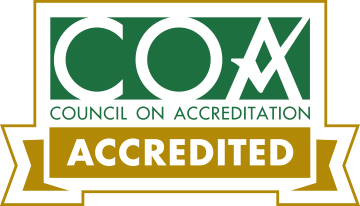
The Nurse Anesthesia Program at Saint Mary’s University of Minnesota is accredited by the Council on Accreditation of Nurse Anesthesia Educational Programs (COA).
Questions related to the program’s accredited status should be directed to Council on Accreditation:
10275 W. Higgins Rd., Suite 906 Rosemont, IL 60018-5603 Phone: 224-275-9130 Web: www.coacrna.org
The program’s next review by the COA is scheduled for May/October 2029.
What is the certification pass rate for first time takers?
The pass rate for the class of 2022 was 87%.
What is the attrition rate for the most recent graduating classes?
The attrition rate is 0% and has been for the last four years.
What is the employment rate of graduates within six months of graduation?
100% of our graduates have been employed upon graduation and successful completion of the National Certification Exam (NCE). This has been true for the past 10 years.
What You'll Learn
- Advanced knowledge, skills, and judgment around human communication
- Leadership skills to influence healthcare policy and implement changes in care systems
- Professional, ethical values guided by nursing scientific underpinnings
- Analytical methods for evidence-based practice within the framework of health
- Selection, use, and evaluation of healthcare information systems
- Clinical judgment, systems thinking, and accountability to improve patient outcomes
Foundations in Nurse Anesthesiology
Are you a nurse preparing to apply to a nurse anesthesiology program? Our fully-online course, Foundations in Nurse Anesthesiology, offers the academic and professional preparation you need, including a broad chemistry review covered on the National Certification Exam (NCE).
Pairing quality experience with student success
When interviewing with the director and associate director of the nursing anesthesiology program, Tenzin Lobsang remembers being impressed by the quality of the education offered at Saint Mary’s and how dedicated the faculty was to student success. Through the didactic education provided in classrooms and clinical hands-on experience in labs, she feels that Saint Mary’s is preparing its students to become the best clinicians they can be.
Ready to apply? Learn about taking the next steps.
General Requirements
Applicants seeking admission to this program must meet the admission requirements for Saint Mary’s University of Minnesota Schools of Graduate and Professional Programs and for the Doctor of Nurse Practice in Nurse Anesthesiology Program. In addition to University admission requirements, applicants must have:
- Completed an appropriate baccalaureate degree from a regionally accredited institution. Degrees must be completed and final transcripts must be submitted by the September 15 deadline. Appropriate degrees include the areas of nursing, biophysical, biological or behavioral sciences.
- Overall GPA of 2.75 on a 4.0 scale or higher.
- A calculated Science and Math GPA of 3.0 or higher (this is explained and determined as a part of the application process). * Current unencumbered licensure as a Professional Registered Nurse in the State of Minnesota, or eligible for reciprocity.
- A minimum of one year of experience as a Registered Nurse in a critical care setting at the time of application. Critical care employment must be ongoing until 90 days before the program is started. Critical care as defined by this program includes cardiac ICU, neuro ICU, neonatal ICU, and pediatric ICU. The cardiac cath lab, PACU, long term acute care, and emergency room care do not meet the program definition of critical care. Flight nursing will be considered on a case by case basis.
- A completed application submitted by the September 15 deadline.
- A completed Health Status Form must be submitted prior to matriculation. Documented immunity is required for rubella, rubeola, varicella, Hepatitis B, and mumps. Vaccinations will be required in non-immune students. Proof of receiving the Tdap vaccine (protection against diphtheria, tetanus, and pertussis) that extends to the date of the student’s graduation from the program is required.
- Additional annual health-related documents are required later in the program including proof of a negative 2-StepTB TEST test, QuantiFERON®-TB Gold-in-Tube test (QFT-GIT), or a T-SPOT® TB (or completion of the Positive TB Test Protocol) and proof of annual vaccination against influenza. Students that are positive for TB must follow the Nurse Anesthesia Student Protocol. This includes proof of a negative chest x-ray within the last year that must be submitted to the Clinical Director for all students who have positive TB tests. In addition, the student must have an annual exam with their primary care provider indicating that there has been no change in their lung health.
- Documented proof of COVID vaccine(s) is required by most hospitals/ same-day surgery centers. Students must comply with the facility policy and, in most cases, be fully vaccinated. Students must be aware that the school cannot guarantee clinical experiences (e.g. pediatrics, cardiac, major medical anesthesiology) in the event that a student decides to not be vaccinated. This could result in a delay of program completion, or, the inability to complete the program.
- These requirements meet or exceed the Standards and Guidelines set by the Council on Accreditation of Nurse Anesthesia Educational Programs.
English Language Proficiency
Students with transcripts from universities outside the United States, the United Kingdom, Ireland, New Zealand, Australia, and Canada (except for the Quebec Province) must take and pass English proficiency testing.
Saint Mary’s accepts:
- Test of English as a Foreign Language (TOEFL) with a minimum score of 72
- International English Language Testing System (IELTS) with a minimum score of 6.0
- Michigan Language Assessment Battery (MELAB) with a minimum score of 74%
- International Test of English Proficiency (ITEP) with a minimum score of 4.0 or Pearson Test of English with a score of 51
- Duolingo with a minimum score of 100.
Application Requirements
Your application must include the following items:
- A completed application form
- Transcripts from countries other than the U.S. must be evaluated on a course by course basis by a university accepted evaluation service, such as World Education Services , Educational Credential Evaluators , Educational Perspectives , or One Earth International Credential Evaluators and be deemed equivalent to accredited U.S. university standards.
- Evaluations from an approved member of the National Association of Credential Evaluation Services (NACES.org) will also be accepted.
- An official transcript(s) for the applicant’s nursing degree, and for any coursework represented on the Academic Evaluation Form completed as part of the application process, if separate from the Bachelor’s degree transcript.
- An official transcript for a college-level chemistry or pre-anesthesia course completed with a letter grade of “B” or better in the last five years. The course should have some element of inorganic, organic, and/ or biochemistry. All prerequisite courses must be taken at an accredited college/ university. Classes may be taken at an accredited two- year college. In progress coursework will be evaluated on a case-by-case basis and may affect application ranking.
- brief description of the applicant’s background, training, and experience; and
- statement indicating the career goals of the applicant and their reasons for seeking admission to the program; and
- description of the areas the applicant considers to be their strengths and areas in which the applicant wishes to develop greater strengths and abilities; and
- personal information the applicant wishes to share. Please do not state any personal identifying information within the essay, as the essays are blinded for the readers to ensure a fair process.
- Two professional references, one of which must be from a current supervisor, as requested by the program by the admission deadline of September 15;
- A current résumé listing educational background and work experience.
Official Transcripts should be sent to Office of Admission
Saint Mary’s University of Minnesota 2500 Park Avenue Minneapolis, MN 55404
Or electronically: [email protected]
Application Deadlines
Fall 2025: September 15, 2024
Start Dates
Fall Semester
Tuition & Fees
We help you find ways to finance your education. Talk to your Enrollment Counselor about scholarships, loans, and other ways to make your education affordable.
Course Catalog
You’ll take courses such as:
- Applied Chemistry and Physics for Nurse Anesthesia
- Applied Epidemiology in Evidence-Based Practice
- Advanced Principles of Anesthesia Practice
The course catalog provides complete information about course requirements.
Career Outlook
The intense demand for nurse anesthetists is expected to skyrocket by 40% between now and 2031. 3 The DNP in Nurse Anesthesiology at Saint Mary’s prepares you to provide every type of anesthesia-related service, practice in every type of setting, and administer anesthesia in every type of procedure where anesthesia is required.
Nurse Anesthetist
Related Programs
Advance your career with flexible programs designed for busy professionals.
- DNP 800 Foundations in Nurse Anesthesiology
Frequently Asked Questions
What are the licensure requirements for becoming a crna.
CRNAs in Minnesota are required to be licensed by the Minnesota Board of Nursing as Advanced Practice Registered Nurses in order to practice. The Minnesota Board of Nursing has approved the graduate program in Nurse Anesthesiology for the purpose of meeting educational requirements for licensure as an advanced practice registered nurse.
Many other states require CRNAs to obtain designated licensure from their state nursing board in order to practice; students should check with their state to verify requirements. For additional information about Saint Mary’s graduate program in Nurse Anesthesiology and professional licensure, visit our Professional Licensure page.
Where can I find the program handbook and administrative manual (PFD)?
To review a complete description of the program, including admission process and requirements, curriculum design, academic and clinical course descriptions and objectives, and policies and procedures, please refer to the following link: Saint Mary’s University of Minnesota Graduate Program in Nurse Anesthesiology Program Handbook and Administrative Manual (PDF) .
What affiliated clinical sites are in Minnesota and Wisconsin?
- Abbott Northwestern Hospital, Minneapolis, Minn.
- Amery Hospital & Clinic, Amery, WI.
- Gunderson St. Elizabeth’s Hospital, Wabasha, Minn.
- Aspirus St. Mary’s Hospital, Rhinelander, WI.
- Cambridge Medical Center, Cambridge, Minn.
- CentraCare St. Cloud Hospital, St. Cloud, Minn.
- CentraCare – Plaza Surgery Center, St. Cloud, Minn.
- Children’s Minnesota Hospital, Minneapolis, Minn.
- Cuyuna Regional Medical Center, Crosby, Minn.
- Allina District One Hospital, Faribault, Minn.
- Essentia Health-Duluth (Miller-Dwan Building), Duluth, Minn.
- Essentia Health-St. Mary’s Medical Center (Duluth), Duluth, Minn.
- Gillette Children’s Specialty Healthcare, Saint Paul, Minn.
- Glencoe Regional Health, Glencoe, Minn.
- Hayward Area Memorial Hospital, Hayward, WI.
- HealthPartners Regions Hospital, Saint Paul, Minn.
- HealthPartners Same Day Surgery Center, Saint Paul, Minn.
- Health Partners Lakeview Hospital, Stillwater, Minn.
- Lakewood Health System, Staples, Minn.
- Lakewalk Surgery Center Duluth, Minn.
- M Health Fairview East Bank, Minneapoois, Minn.
- Marshfield ASC Eau Claire Center, WI.
- Marshfield ASC Marshfield Center, WI.
- Marshfield ASC Minocqua Center, WI.
- Marshfield ASC Wausau Center, WI.
- Marshfield Medical Center-Marshfield, Marshfield, WI.
- Marshfield Medical Center-Neillsville, Neillsville, WI.
- Marshfield Medical Center-Rice Lake, Rice Lake, WI.
- Mayo Clinic Health System in New Prague, New Prague, Minn.
- Mercy Hospital (Mercy & Unity Campuses), Coon Rapids, Minn.
- Northfield Hospital, Northfield, Minn.
- Owatonna Hospital, Owatonna, Minn.
- Ridgeview Medical Center, Waconia, Minn.
- River Falls Area Hospital, River Falls, WI.
- Riverwood Healthcare Center, Aitkin, Minn.
- St. Croix Regional Medical Center, St. Croix Falls, WI.
- St Cloud Surgical Center, St. Cloud, Minn.
- St. Luke’s Hospital, Duluth, Minn.
- Surgical Specialty Center of Minnesota, St. Louis Park, Minn.
- HSHS St. Vincent’s Hospital, Green Bay, WI.
- Hennepin Healthcare, Minneapolis, Minn.
What is the exact chemistry course requirement?
Applicants must submit a transcript for a college-level chemistry course completed with a letter grade of “B” or better in the last five years. The course should have some element of inorganic, organic, and/ or biochemistry. All prerequisite courses must be taken at an accredited college/ university. Classes may be taken at an accredited two-year college. In progress coursework will be evaluated on a case-by-case basis and may affect application ranking.
Please define “within the last five years”:
Applicants must meet the chemistry requirement within five years of the applicant anticipating starting the program. For example, if a student is planning to apply for a fall 2025 start, they must demonstrate they have completed a Chemistry course that meets the stated requirements and ended in summer 2020 or after.
Can the chemistry course be ‘in progress’?
Yes, the course can be in-progress at the time of application, however, it may affect the applicant’s application ranking, meaning a candidate with a completed chemistry course may be selected over someone who has not completed the chemistry requirement for matriculation into the program.
Why do some programs require a chemistry course and others do not?
Nurse Anesthesiology curriculum is very science dense. It is important for the program to evaluate the candidate’s recent science experiences as part of the application process. It is also important for students to take a recent science course to confirm they are ready for the rigor of a nurse anesthesiology program.
Does the DNP800 Foundations in Anesthesiology course count toward the chemistry requirement?
Y es, the course does meet the chemistry requirement for matriculation into the Saint Mary’s University of Minnesota Graduate Program in Nurse Anesthesiology. The candidate must contact other nurse anesthesiology programs to determine if they will also accept the course as a chemistry prerequisite. Please share the DNP800 course website if they have questions or concerns. Learn more here .
What other chemistry courses meet the chemistry requirement?
At this time Saint Mary’s does accept the Barry pre-anesthesia course (ANE 695) as a chemistry prerequisite, in addition to our own pre-anesthesia course (DNP800). Otherwise, Saint Mary’s Nurse Anesthesiology program does require applicants to take a college-level chemistry course as described above. The best thing an applicant can do is KEEP THE COURSE SYLLABUS, just in case Saint Mary’s admissions department should have any questions.
When do you review applicants?
The DNP application process is lengthy, as is the file review process. The deadline for applications each year is September 15. It then takes 5 weeks to ensure all documents are present and ready for the Nurse Anesthesiology department to review the files. All Essays are blinded and evaluated by CRNA instructors and faculty to ensure fairness. The complete file is then taken into consideration, and the most qualified individuals are offered an interview to determine if they are a good fit for Saint Mary’s, and, for the candidate to determine if Saint Mary’s is a good fit for them! Nurse Anesthesiology plans to conduct remote or in-person interviews in December through January. Acceptance letters are sent out in February for a fall start in the program.
Do you keep a wait list?
Yes, Saint Mary’s does keep a very short wait list. It does not roll over from year to year. For example, if a student was on the waitlist to start the program in fall of 2022, and they did not matriculate into the program, then they must reapply and go through the process again for the fall of 2023 and so-on.
What should I know about the exam prep?
Graduates of this program are eligible to take the certification examination offered by the National Board of Certification and Recertification of Nurse Anesthetists. Upon successful completion of the exam, graduates are known as a Certified Registered Nurse Anesthetist (CRNA).
For more information, please visit:
National Board of Certification and Recertification of Nurse Anesthetists
Council on Accreditation of Nurse Anesthesia Educational Programs (COA)
News from the School of Health and Human Servies
Sources and disclaimer.
- Bureau of Labor Statistics, U.S. Department of Labor, Occupational Outlook Handbook, Nurse Anesthetists, Nurse Midwives, and Nurse Practitioners at https://www.bls.gov/ooh/healthcare/nurse-anesthetists-nurse-midwives-and-nurse-practitioners.htm (visited July 31, 2023).
- Science Direct, Work patterns, socio-demographic characteristics and job satisfaction of the CRNA workforce – Findings from the 2019 AANA survey of CRNAs at https://www.sciencedirect.com/science/article/abs/pii/S0029655420307193 (Visited July 31, 2023).
- American Association of Nurse Anesthesiology, 2021 CRNA Compensation & Benefits Survey at https://store.aana.com/Products/ProductDetails/S-ANA-001/2021-CRNA-Compensation-!26-Benefits-Survey (visited July 31, 2023).

School of Nursing
Graduate degrees and programs, personal statement and resume requirements for graduate applicants, doctor of nursing practice (dnp).
Below you will find the prompts and guidelines for the personal statement and resume requirements for the specialization to which you are applying. Please include your answers to these questions in the program materials section of your NursingCAS application.
BSN to DNP–Nurse Anesthesia
Personal Statement Please respond to one of the following prompts in two pages or less. Consider the content as well as writing skill.
Please tell us what your professional goals are and how your graduate degree will enhance your achievement of these goals?
Do you have a background, identity, interest or talent that is so meaningful you believe your application would be incomplete without it? Please share your story.
In addition, please answer the following in 250 words or less:
What steps have you taken or resources have you put in place to move you towards success within the anesthesia specialization?
Formatting requirements:
Double Spaced
Size 12 Font
Resume/CV Guidelines General Instructions:
Use 12-point font
List information for each section in reverse chronological order (most recent first)
Please include the following information in the order listed:
Contact Information
Education (please include Institution, Degree, Major, Date; include degree granting institutions only)
Employment (please include Employer, Unit, Title, Dates; include all RN positions and other relevant employment)
Licensures and Certifications (please include type, State/Agency/Institution, Date)
Honors and Awards (please include name of award or honor, society/agency, Date)
Professional Activities (please include organizations, memberships, advisory boards – include name, role, date)
Scholarship Activities (research, quality improvement projects, publications, etc.)
Community Service
BSN to DNP–Family Nurse Practitioner, Psychiatric Mental Health Nurse Practitioner
Personal Statement Please respond to one of the following prompts in 500 words or less. Consider the content as well as writing skill.
Describe how social determinants of health figure into advanced practice primary care.
Consider a primary care issue and review the current evidence related to that issue. What can an APRN do to improve patient outcomes related to that issue?
What are your professional goals? How does obtaining the DNP versus a master's degree help you to achieve your professional goals?
Please be sure to include the following information:
Community Service/Volunteer Experience
Leadership Roles
Experience with diverse populations
Research or quality improvement experience
FNP to DNP-Psychiatric Mental Health Nurse Practitioner
What are your professional goals? How does obtaining the DNP help you to achieve your professional goals?
Post-Graduate Certificate-Psychiatric Mental Health Nurse Practitioner
Personal Statement Please respond to one of the following prompts in 500 words or less. Consider the content as well as writing skill.
What are your professional goals?
Resume/CV Guidelines
General instructions:
Use 12-point font
List information for each section in reverse chronological order(most recent first)
Please be sure to include the following information

Southern Illinois University Edwardsville is authorized to operate as a postsecondary educational institution by the Illinois Board of Higher Education .
- Current Students
- Faculty & Staff
- Community & Business Partners

NursingStatement.com by Dr. Robert Edinger Helping Nurses S ince 1995 [email protected]
Nursing Personal Statement of Purpose

Standard Statement Service
Premium Statement Service
Thanks for subscribing!
Letter of Recommendation
CV/Resume Editing
I invite you to fill out my Interview Form at this link. Even if you have a draft, the information on the interview form is often helpful and serves as the basis for me to make creative improvements to the statement. I spend more time with the statement for my premium service customers at US$299.00 ; this is especially true when it comes to making major contributions to creative ideas. My standard service at US$199.00 is for clients who already have a well-developed draft that they need to have tweaked. My premium service is for those clients who want my ultimate effort and further revision after making changes.
- Feb 2, 2023
Nursing Personal Statement
Updated: Jan 14

The University of ____ is my first choice among Doctor of Nursing Practice Degree (DNP) programs with a concentration in Nurse Anesthesia, for several reasons. I especially appreciate your development of global perspectives on Nursing. If accepted into your program, I will attend the University of ____, where I hope to cultivate a particular interest in ways to care for the underserved, especially in the Developing World. I particularly look forward to participating in medical missions as a CRNA in support of surgeons. I am committed to my quest for service, becoming an innovative leader in nurse anesthesia education and community service.

I keenly look forward to spending the balance of my professional life working at a state-of-the-art hospital or outpatient center. I most enjoy every stage of the patient´s journey. From being nervous or anxious before the procedure, constantly monitoring their progress, and, finally, explaining everything that happened during the surgery after they wake up.
I am increasingly interested in working with children and neonates. Pursuing a specialization in Pediatric Nursing would advance my current practice to a new level. Caring for children from low-income households is something that I would find incredibly fulfilling.
My volunteer experience began in high school, at local hospitals, and serving as an ambassador for the American Red Cross. I have worked full-time as a Registered Nurse for the past six years and am a critical care float nurse at ____ Medical Center in Chicago.

I shadowed a CRNA for the first time in 2017; and have been preparing for this application ever since. I could see first-hand how she worked, intubating patients, dispensing medications, and anesthetic gases, monitoring vital signs, and communicating with the surgeons. I have experience working in intensive care units, the emergency department, and the post-anesthesia care unit. Particularly adept at the operation of invasive monitoring devices - such as intra-aortic balloon pumps, Swan-Ganz catheters, and external ventricular drains: I feel most at home with the highest acuity trauma and post-surgical patients, fresh open-heart patients, and those on ECMO (extracorporeal membrane oxygenation).
Thank you for considering my application.
Nursing Personal Statement, CRNA Missions
#crna #mission #personalstatement #dnp #editing #samples #examples #writing #help #service
- Nurse Anesthesia CRNA Statements
Recent Posts
DNP CRNA Nurse Anesthesia at ____ University, Florida
DNP CRNA Personal Statement, Latina
CRNA Application, COVID-19, Personal Statement
Kommentarer
Search this website
Department of nurse anesthesiology.
The nurse anesthetist profession has its roots in the Civil War when nurses first administered anesthesia to wounded soldiers. Today, the specialization of Certified Registered Nurse Anesthetists (CRNAs) safely administer approximately 43 million anesthetics to patients each year in U.S. hospitals, surgical centers, physicians’ offices and other healthcare settings.
In most urban and suburban settings, CRNAs work in a collaborative team practice with physician anesthesiologists. In less populated areas, they are the sole anesthesia providers in most rural hospitals, enabling these facilities to offer obstetric, surgical and trauma stabilization and other services.
If you feel the calling to become a CRNA and lead the way in safe, cost-efficient, quality care in anesthesia practice, FIU Nursing’s Doctor of Nursing Practice in Nurse Anesthesia (DNP-NA) is for you. Our full-time education and training program can lead to a degree in nine consecutive semesters. You will learn best practices, advanced skills, and interdisciplinary collaboration in classroom, clinical and high-tech simulation settings.
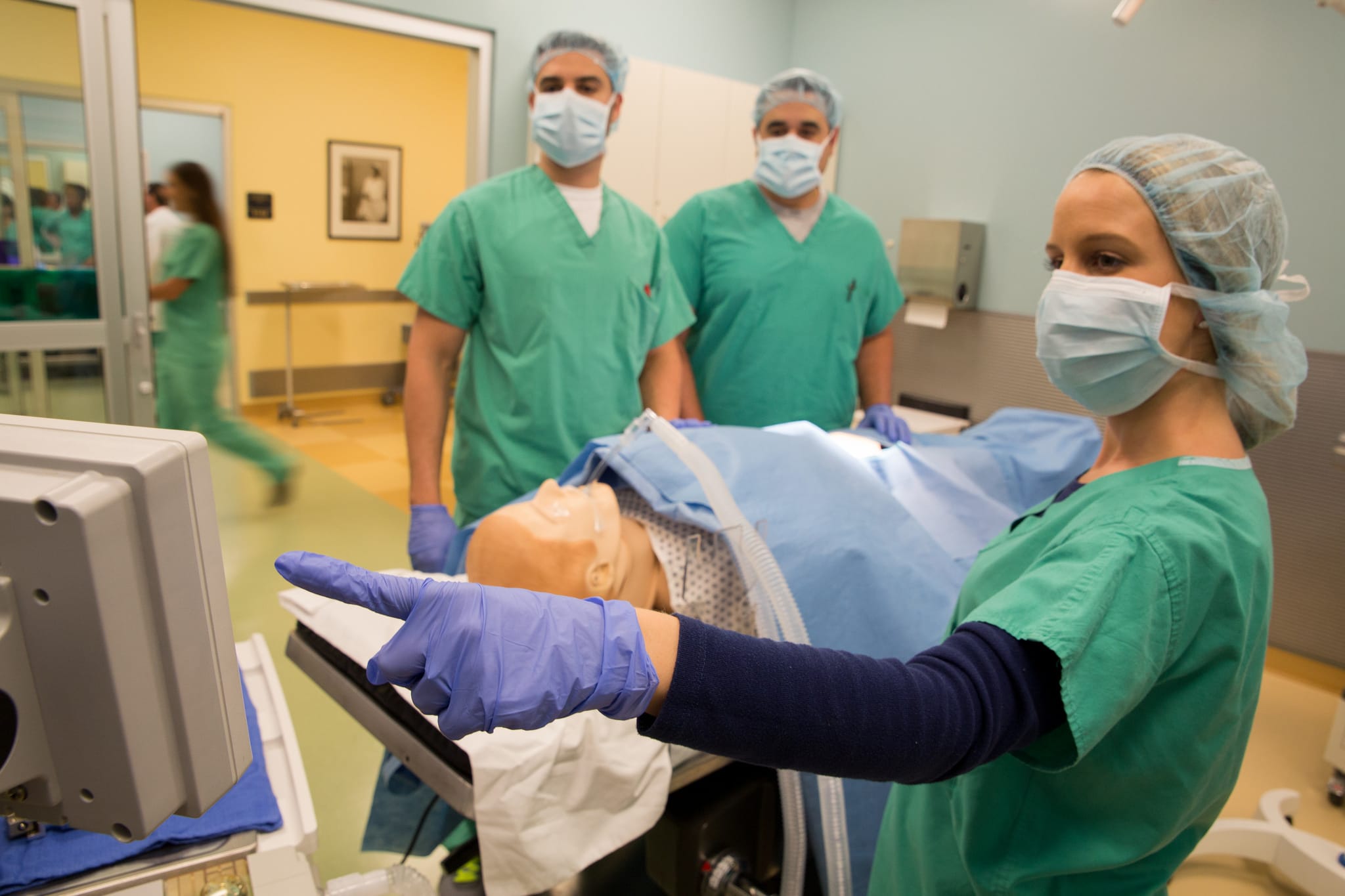
Explore Our Program
- DNP in Nurse Anesthesia
Calendar Events
Virtual Information Session: Fourth Tuesday of each month at 12:30 pm RSVP Link
Accreditation
The Doctor of Nursing Practice in Nurse Anesthesia at Florida International University is accredited by:
Council on Accreditation of Nurse Anesthesia Educational Programs (COA) | 10275 W. Higgins Rd., Suite 906 Rosemont, IL 60018-5603 | Tel: 224-275-9130 | Email: [email protected]
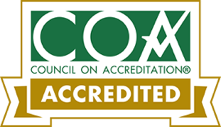
The Doctor of Nursing Practice program at Florida International University is accredited by the Commission on Collegiate Nursing Education ( http://www.ccneaccreditation.org ).
Florida State Board of Nursing | 4052 Bald Cypress Way, BIN CO2, Tallahassee, FL 32399 | Ph: 850-245-4125

FIU Department of Nurse Anesthesiology Nicole Wertheim College of Nursing & Health Sciences Modesto A. Maidique Campus | AHC 3, First Floor, Student Services 11200 SW 8 Street | Miami, Florida 33199 Tel: 305-348-7703 | Email: [email protected]
Follow FIU Nursing: Follow FIU Nursing and Health Sciences on Facebook | Follow FIU Nursing and Health Sciences on Twitter
Master of Science in Nursing (MSN) Overview

NurseJournal.org is committed to delivering content that is objective and actionable. To that end, we have built a network of industry professionals across higher education to review our content and ensure we are providing the most helpful information to our readers.
Drawing on their firsthand industry expertise, our Integrity Network members serve as an additional step in our editing process, helping us confirm our content is accurate and up to date. These contributors:
- Suggest changes to inaccurate or misleading information.
- Provide specific, corrective feedback.
- Identify critical information that writers may have missed.
Integrity Network members typically work full time in their industry profession and review content for NurseJournal.org as a side project. All Integrity Network members are paid members of the Red Ventures Education Integrity Network.
Explore our full list of Integrity Network members.
- What Can I Do?
How to Get an MSN
- Admission Requirements
- Core Concepts
- What to Expect
- BSN vs. MSN
Are you ready to earn your online nursing degree?

Master of Science in Nursing (MSN) Degree at a Glance
- Average Program Length: 1-2 years
- Average Credits Required: 36 to 60
- Average Annual Salary: $103,000 (Payscale, February 2024)
- Offered Online? Partially
- Clinical Hours Required? Yes
- Program Traits: Advanced clinical skills, leadership and management, research, health policy, and ethical, legal, and communication skills
A master of science in nursing (MSN) is an advanced degree for registered nurses wanting to specialize in management, education, or clinical practice.
An MSN enhances your clinical skills, leadership capabilities, and research proficiency, helping you pursue higher-level positions and increased salaries.
Popular Online MSN Programs
Learn about start dates, transferring credits, availability of financial aid, and more by contacting the universities below.
What Can I Do With an MSN Degree?
With an MSN degree, you can work with various patient populations in different settings. An MSN degree opens the door to advanced roles and increased salary potential.
Graduates can pursue various careers specializing in family care, psychiatry, pediatrics, gerontology, policy, and research:
- Nurse Practitioner
Clinical Nurse Specialist
Nurse educator.
- Nurse Administrator
- Health Policy Expert
- Nurse Consultant
- Clinical Research Nurse
MSN graduates are prepared to lead, educate, and innovate within the healthcare sector. They can have a significant impact on patient outcomes and the nursing profession.
Specialized MSN Tracks
Specialized MSN programs enable candidates to focus on specific areas of care. These specializations prepare graduates for advanced practice registered nurse (APRN) roles addressing various patient needs and advancing healthcare delivery using specialized expertise and skills.
Certified Nurse Midwife
These APRNs specialize in childbirth, reproductive health, and gynecological care. They provide holistic and supportive care throughout pregnancy, labor, and postpartum.
Family Nurse Practitioner
Family nurse practitioners offer comprehensive healthcare across the lifespan. They diagnose and treat a variety of acute and chronic health conditions while emphasizing disease prevention and health management.
Nurse Anesthetist
Certified registered nurse anesthetists (CRNAs) provide care before, during, and after the administration of anesthesia and surgical procedures. They protect patient safety and comfort in a variety of healthcare settings. Note that a doctor of nursing practice is required to become a CRNA.
Nurse educators help shape the future of nursing by teaching and mentoring students. They collaborate with colleagues to develop curricula and promote evidence-based practice in academic and clinical settings.
Psychiatric Nurse Practitioner
These APRNs specialize in diagnosing and treating mental health disorders. They provide therapy, prescribe medications, and implement behavioral health therapies across the lifespan.
A CNS focuses on improving patient outcomes and health delivery within a specialized area of practice, such as pediatrics, oncology, geriatrics, and women’s health.
How Much Will I Make With a Master’s Degree in Nursing?
$8,580 Monthly
$103,000 Annually
Source: Payscale
- Step 1: Decide on the Type of MSN Program
- Step 2: Find an MSN Program
- Step 3: Apply to MSN Programs
- Step 4: Secure Funding for MSN Programs
- Step 5: Attend MSN Classes
- Step 6: Graduate with an MSN
Admission Requirements for a Master in Nursing Program
The length of an MSN varies depending on whether you attend full-time or part-time and the specialization you choose. Admission requirements to a program can vary by institution. However, there are several general requirements, including:
Undergraduate Credits
Most programs require a bachelor of science in nursing (BSN) degree from an accredited institution. However, some allow nurses with an ADN to obtain their BSN and MSN in the same program; others allow those with a bachelor’s degree in another field who meet specific coursework prerequisites.
Transcripts
Official transcripts from all undergraduate and postgraduate coursework.
Application Materials
These can include a completed application form, personal statement, letters of recommendation, and resume.
Minimum GPA
Most programs require a minimum GPA, but some will compromise when applicants meet other criteria.
Test Scores
Most programs no longer require test scores, but some require GRE or GMAT scores.
Core Concepts in a Master in Nursing Program
An MSN program covers the skills and competencies needed for advanced nursing practice, leadership, and specialized care. Graduates can pursue roles that demonstrate a deep understanding of the complexities of healthcare and the ability to improve patient and system outcomes. Core concepts of an MSN program often emphasize advanced clinical skills, patient care, healthcare policies, ethics, and evidence-based practice.
- Advanced Pharmacology: Understanding the use and effect of drugs in advanced practice.
- Pathophysiology: The study of physical and biological abnormalities in disease.
- Health Assessment: Advanced skills in assessment, including physical and psychological aspects.
- Nursing Ethics: Ethical issues and decision-making.
- Healthcare Policy: Analysis and implications of healthcare policy on practice and patient outcomes.
- Leadership: Strategies for leading teams and improving healthcare delivery systems.
- Research Methods: Techniques for conducting and applying research to improve patient care.
Clinical & Lab Components in an MSN Program
MSN programs require students to complete a certain amount of clinical hours to graduate. Online MSN programs have similar requirements. Clinical Hour practicum requirements vary greatly from specialty to specialty.
- Nurse Practitioner: 500-600 hours
- Clinical Nurse Specialist: 600+ hours
- Nurse Midwife: 1,000 hours
- Certified Registered Nurse Anesthetist Programs: 2,500 hours + administering of 800 anesthetics
What to Expect From an Online MSN Program
Traditional and online MSN programs often offer flexibility and accessibility for working professionals. However, students can expect more flexible scheduling in an online MSN format . The didactic component is typically all online and asynchronous, allowing candidates to absorb theoretical and knowledge-based content in self-paced study.
Most online MSN programs use a hybrid approach, including online learning and in-person labs and clinical rotations . Online MSN programs typically use an interactive learning platform to support discussion forums, video lectures, and virtual simulations.
Earning a BSN vs. an MSN
Earning a bsn.
- The BSN is designed to educate aspiring nurses. Students must commit to four years of rigorous study, and many find it difficult to work full time while in school.
- Coursework is designed to develop critical thinking. The study of natural and social sciences, public health, research techniques, and communication teaches nurses how to make informed decisions about patient care.
- Undergraduate programs focus on preparing nurses to work in a variety of clinical settings. Most practicums are designed to expose students to direct patient care, emphasizing general technique and nursing best practices.
Pros to Accelerated BSN
Cons to accelerated bsn, earning an msn.
- Many working nurses complete the master’s degree in nursing in two years without leaving their full-time jobs.
- Master’s degree in nursing candidates can choose study tracks focusing on specialized nursing topics like gerontology, anesthesia, or sports medicine. Nurses interested in nonclinical roles can focus on management, informatics, or nursing education.
- In a master’s degree in nursing program, candidates are exposed to a workplace environment that correlates with their chosen specialization. Hands-on experience allows candidates to put their knowledge of advanced theory into practice.
Pros to Accelerated MSN
Cons to accelerated msn.
Page last reviewed March 12, 2024

The Best Online Master’s in Nursing Programs
Looking to advance your career with an MSN degree? In this guide, explore the best online MSN programs and how to apply.

The Best Online RN-to-MSN Programs

The Top Direct-Entry Master’s in Nursing Programs

The Best RN-to-MSN Programs (No BSN Required) of 2024
Are you ready to earn your online nursing degree.
Whether you’re looking to get your pre-licensure degree or taking the next step in your career, the education you need could be more affordable than you think. Find the right nursing program for you.

CRNAPersonalStatement.com by Dr. Robert Edinger Helping Nurses S ince 1995 [email protected]

Standard Statement Service
Premium Statement Service
Thanks for subscribing!
Letter of Recommendation
CV/Resume Editing
- Oct 12, 2023
CRNA Personal Statement, DNP Nurse Anesthesia
Updated: Jan 28
I was born in New York, raised in St. Louis, and now reside in Atlanta. I hold a B.S. in Biology and B.S. in Nursing (Magna cum Laude), and I am a Registered Nurse. I am a well-qualified and highly experienced nurse now wishing to specialize in the demanding field of Nurse Anesthesia that will tax my academic ability and experience to date while extending my knowledge into a fascinating and challenging specialist direction.

I decided to become a nurse at nine and have never wavered in that decision nor regretted it. I have nursed in various settings and have experience autonomously using highly technical medical equipment . I have worked in many roles requiring independent decision-making and have fill ed leadership and training roles. I have thoroughly enjoyed the ‘bedside nursing’ that I have undertaken and believe I am an excellent nurse. However, I am also ambitious and academically able. I seek progress in my career and realize that almost any choice made at this stage to advance my job will involve a move away from direct patient care.

On that basis, I have very carefully considered my next step. I have decided that I have the academic ability, commitment, potential, and characteristics required to become a CRNA . I am attracted to this specialty because the training will provide academic challenges beyond that in almost any other nursing specialty. The CRNA role calls me because it is a prestigious one providing autonomy and is highly technical and critical. The role also offers vast career choices and a flexible schedule.
I am aware that the program will attract many well-qualified applicants. However, I genuinely consider myself to be an excellent candidate. I know that I shall be able to meet the academic challenge that the program will present and have the technical aptitude and interest necessary to qualify and succeed in the role. I will also bring significant and relevant nursing experience to the program and can promise total commitment and enthusiastic participation.
This applicant does not mention a second language. They are clearly part of the white, monolingual, monocultural, majority of nurses in America and that is fine. Diversity issues are not a requirement, although, I heartily recommend that even monolingual white applicants mention diversity in their statements, celebrating it, showing that one has an inclusive disposition and compassion for the underserved. I have worked with many applicants in Nursing who are white, monolingual, and monocultural. I suspect, however, that some of them had studied Spanish and knew at least a few words and did not even mention this in their statements. That is a mistake. The need for Spanish speaking nurses is so acute in America that any effort to learn this language, even minimal, is worth mentioning. I recommend to some applicants that they include a brief description of the level they have attained in Spanish and a recognition of how important this language is for the underserved. For millions of residents of America, Spanish is the only language in which they can communicate.
The important takeaway here is that one does not need to speak Spanish well for the effort to have value. Simply declaring that one is trying says a lot. I recommend declaring in your Statement that improving your Spanish is one of your priority goals. This will amplify your contribution as a Nurse to the underserved. The importance of the underserved in the Personal Statement can hardly be overestimated, hence, the importance of Spanish.
#crna #nursing #nurseanesthesia #statementofpurpose #samples #editing #service

- Nursing Experience Statement Help
Recent Posts
CRNA Personal Statement Example, Bilingual Latina
DNP Nurse Anesthesia, CRNA Personal Statement, Korean

IMAGES
VIDEO
COMMENTS
Personal Statement- Nurse Anesthesia Application. By popular demand, I am sharing my personal statement from when I applied to CRNA school in 2016. Keep in mind, it's not perfect by any means and I have become a much better writer while in CRNA school due to all the doctoral research classes, haha. However, I wanted to be honest and not make ...
CRNA Personal Statement Examples. Updated: Feb 20. Born and raised in Manila, the Philippines, I am a young man and a nurse who is three-quarters Filipino and one-quarter Chinese. One of four siblings, I grew up in a tiny, humble home in one of the most impoverished slums in Manila, far from the city lights.
Sample Personal Statement: Anesthesiology. I am eager to pursue residency training in anesthesiology. After completing third-year medical school rotations, anesthesiology stands out as the specialty that aligns perfectly with my personality and future goals. Anesthesiology combines the cerebral requirements of internal medicine with the ...
CRNA Personal Statement, 500 Words. My application to your distinguished DNP Program is unusual as far as I am already an experienced nurse anesthetist having qualified and then practiced in my home country, Morocco, for over four years. Nurse Anesthesia appealed to me because it is academically and professionally demanding with constant ...
The personal statement is an important requirement for residency and fellowship applications that many applicants find daunting. ... a descriptive study of anesthesia applicants' personal statements ranked those that included elements such as discussion of a family's or friend's illness or a patient case as more original. 3 We feel that ...
Of course, each nurse anesthesia school or program is different in regards to admission criteria. So, if a school comes out and says their last incoming class average GPA was 3.7 and your GPA is 3.0 you may feel inclined to speak on it. ... If you're still stumped on where to start with your personal statement, come join us at CRNA Chase ...
The Diversity CRNA Personal Statement and Resume Review Committee exists to support You! As you move toward your goal of admission to a graduate program in nurse anesthesia, we aim to offer you guidance and feedback to help you stand out as a competitive applicant. The Review Committee is composed of a diverse group of Certified Registered ...
Anesthesiology residency personal statement example #1. After spending 5 years as an EMT, I made the life-changing decision to go to medical school. My plan was to explore working in an emergency department so I could keep using the skills I had gained as an EMT. On the more extreme side, I was considering becoming a trauma surgeon so I could ...
CRNA, Nurse Anesthesia DNP Personal Purpose. My short-term goal is to gain as much knowledge and skill as possible, studying to qualify as a CRNA. A very dedicated student (as suggested by my 4.0 undergraduate GPA), I hope to graduate near the top of my class and then obtain my CRNA license. My long-term goal is to help educate future nurse ...
CRNA Personal Statement Nurse Anesthesia Serving in the ICU of a large metropolitan hospital, many of my patients come from inner city, disadvantaged, poverty-stricken communities. I would like to be able to give back to those communities and improve outcomes by providing opportunities for youth.
CV/Resume Editing. US$149.00. Nursing Personal Statement of Purpose. I invite you to fill out my Interview Form at this link. Even if you have a draft, the information on the interview form is often helpful and serves as the basis for me to make creative improvements to the statement. I spend more time with the statement for my premium service ...
(Submission of a personal statement describing the applicant's personal career goals and interest in graduate study. ... Successful completion of the nurse anesthesia program (83-course credits) requires a substantial time commitment averaging 54-64 hours per week (including class time, clinical, and study time) during the 36-month program. ...
New Documents Deadline: All official documents must be submitted by September 1. Certified Registered Nurse Anesthetists (CRNAs) are advanced practice nurses who enjoy a high degree of autonomy and professional respect. CRNAs provide anesthetics to patients in every practice setting, and for every type of surgery or procedure.
Applicant Personal Statement a summary (1-2 pages) double-spaced highlighting your professional nursing career. Please include reasons for desiring the nurse anesthesia profession. Three (3) professional references are required two (2) from current ICU RN co-workers and one (1) from your immediate RN ICU supervisor.
Minimum undergraduate nursing GPA of 3.0 on a 4.0 scale. Submission of a resume or curriculum vitae (CV) to NursingCAS. Submission of a personal statement to NursingCAS. Submission of three professional reference forms via NursingCAS. One must be from the supervisor of your most recent critical care setting.
Personal Statement for Anesthesia Residency, 2012 Before I had even applied to medical school, I had a serious interest in becoming an anesthesiologist. Like many who go into the field, my original interest was peaked by my fascination with the phenomenal bio-chemical processes that are undergone each second in the human body.
CV/ResumeEditing & EnhancementUS$149.00 . Sample 1st Paragraph of the Personal Statement for the DNP in Nurse Anesthesia. Since January 2014, I have been serving as a Registered Nurse in an ICU, first in Tennessee and now in Minnesota. Immediately prior to this, I completed a six-month internship in the Operating Room.
The Nurse Anesthesia Program at Saint Mary's University of Minnesota is accredited by the Council on Accreditation of Nurse Anesthesia Educational Programs (COA). Questions related to the program's accredited status should be directed to Council on Accreditation: 10275 W. Higgins Rd., Suite 906 Rosemont, IL 60018-5603. Phone: 224-275-9130.
BSN to DNP-Nurse Anesthesia. Personal Statement Please respond to ... Post-Graduate Certificate-Psychiatric Mental Health Nurse Practitioner. Personal Statement Please respond to one of the following prompts in 500 words or less. Consider the content as well as writing skill. ...
Nursing Personal Statement CRNA. I shadowed a CRNA for the first time in 2017; and have been preparing for this application ever since. I could see first-hand how she worked, intubating patients, dispensing medications, and anesthetic gases, monitoring vital signs, and communicating with the surgeons. I have experience working in intensive care ...
Transform your passion for Nurse Anesthesia into a compelling DNP Nurse Anesthesia Personal Statement. Discover how to craft an engaging story on our blog. DNP Nurse Anesthesia Personal Statement Examples. top of page. CRNAPersonalStatement.com by Dr. Robert Edinger Helping Nurses S ince 1995
The nurse anesthetist profession has its roots in the Civil War when nurses first administered anesthesia to wounded soldiers. Today, the specialization of Certified Registered Nurse Anesthetists (CRNAs) safely administer approximately 43 million anesthetics to patients each year in U.S. hospitals, surgical centers, physicians' offices and other healthcare settings.
Nurse Anesthetist. Certified registered nurse anesthetists (CRNAs) provide care before, during, and after the administration of anesthesia and surgical procedures. ... These can include a completed application form, personal statement, letters of recommendation, and resume. Minimum GPA. Most programs require a minimum GPA, but some will ...
CRNA Personal Statement Nurse Anesthesia, Samples, Help. On that basis, I have very carefully considered my next step. I have decided that I have the academic ability, commitment, potential, and characteristics required to become a CRNA. I am attracted to this specialty because the training will provide academic challenges beyond that in almost ...